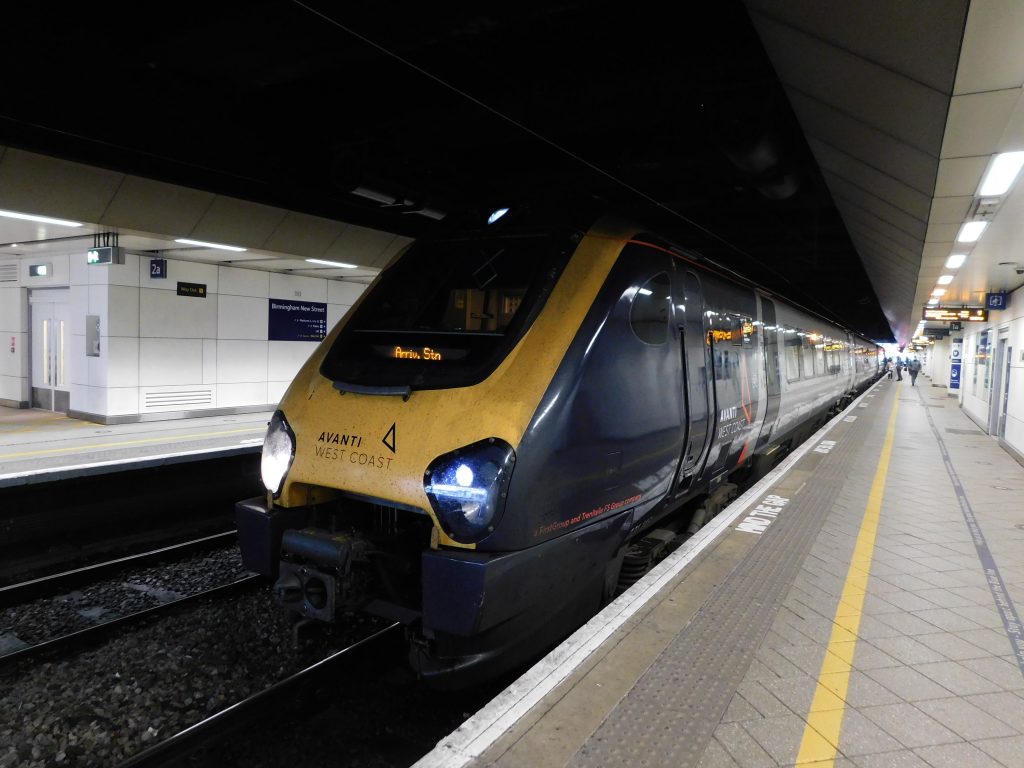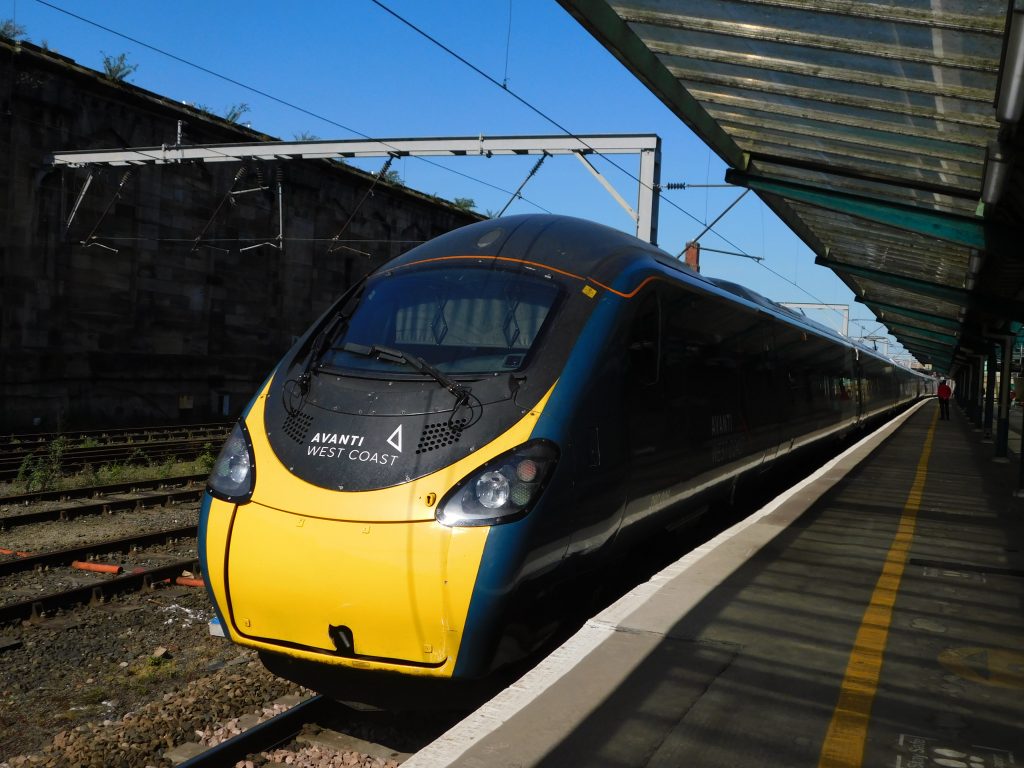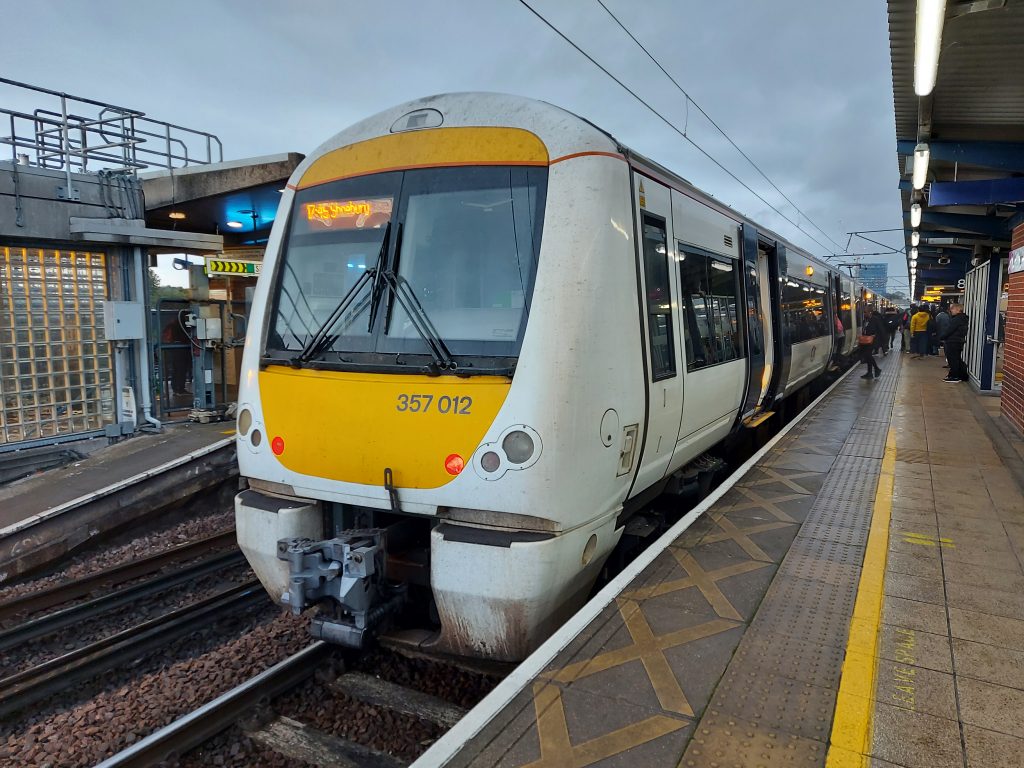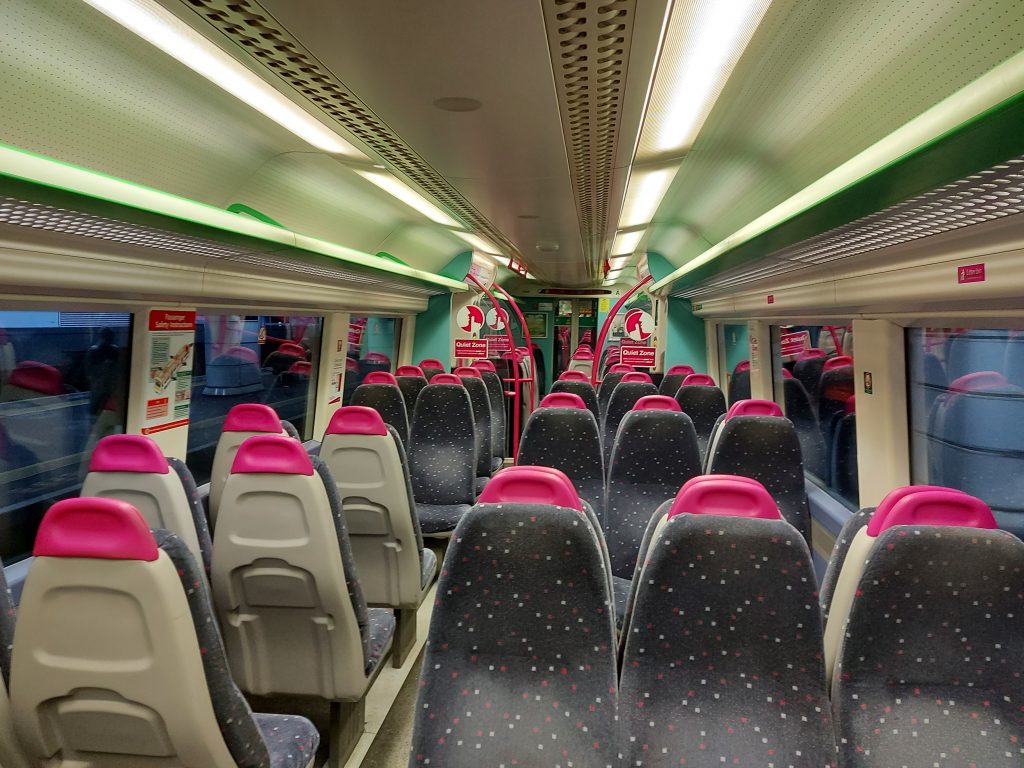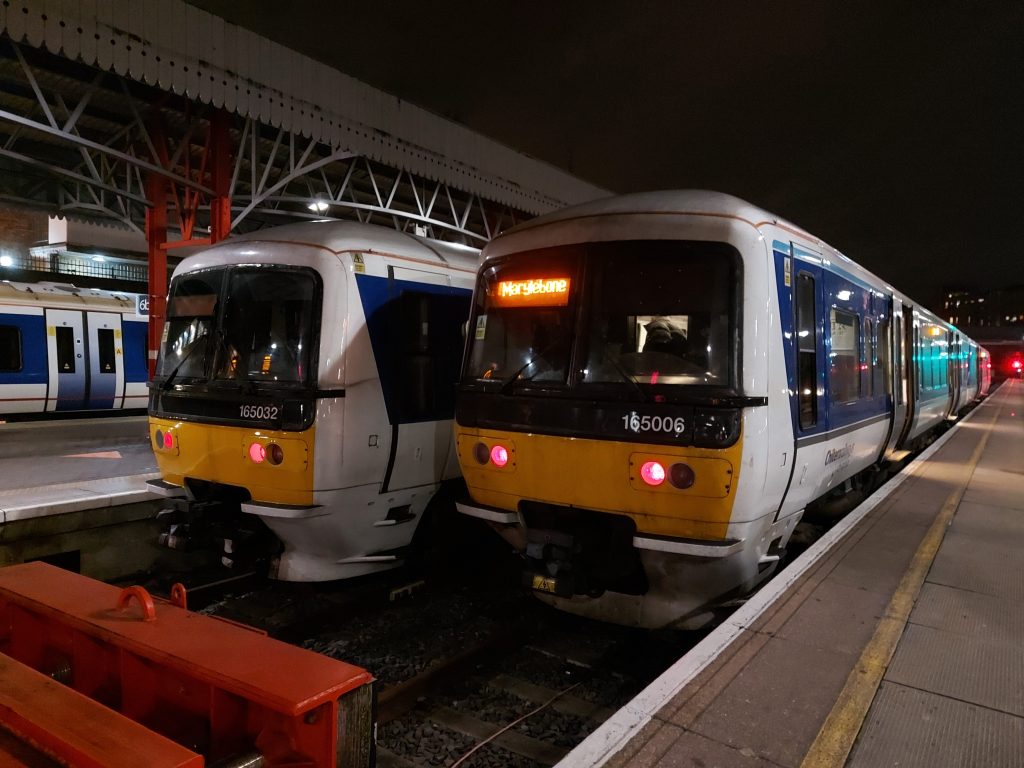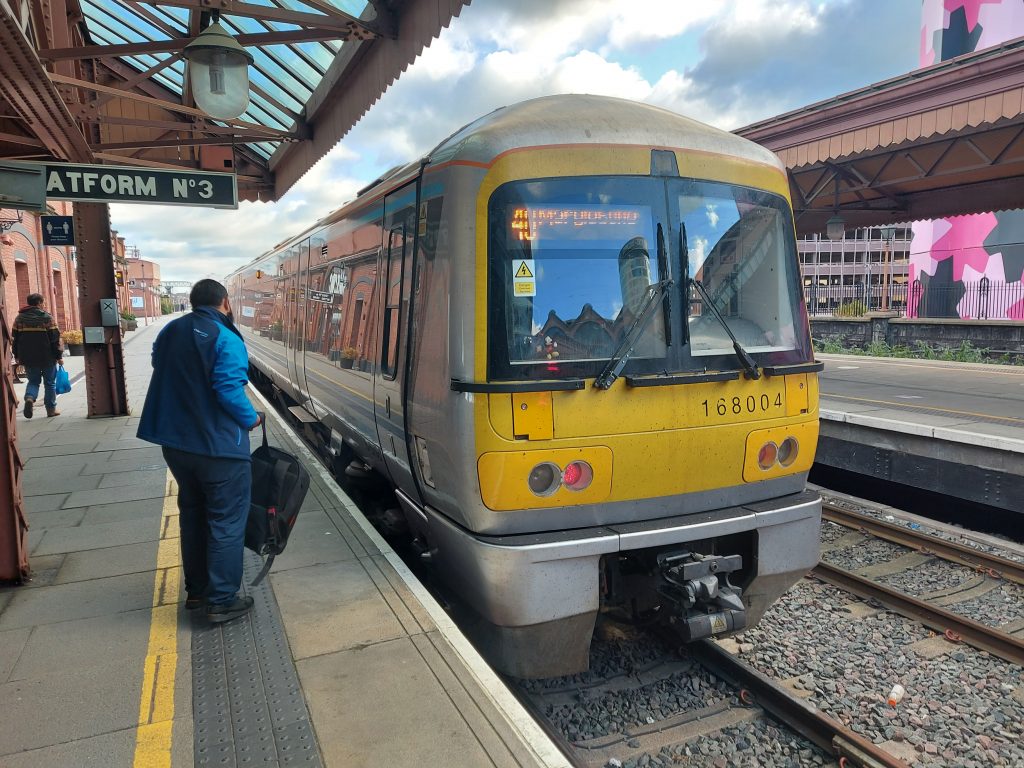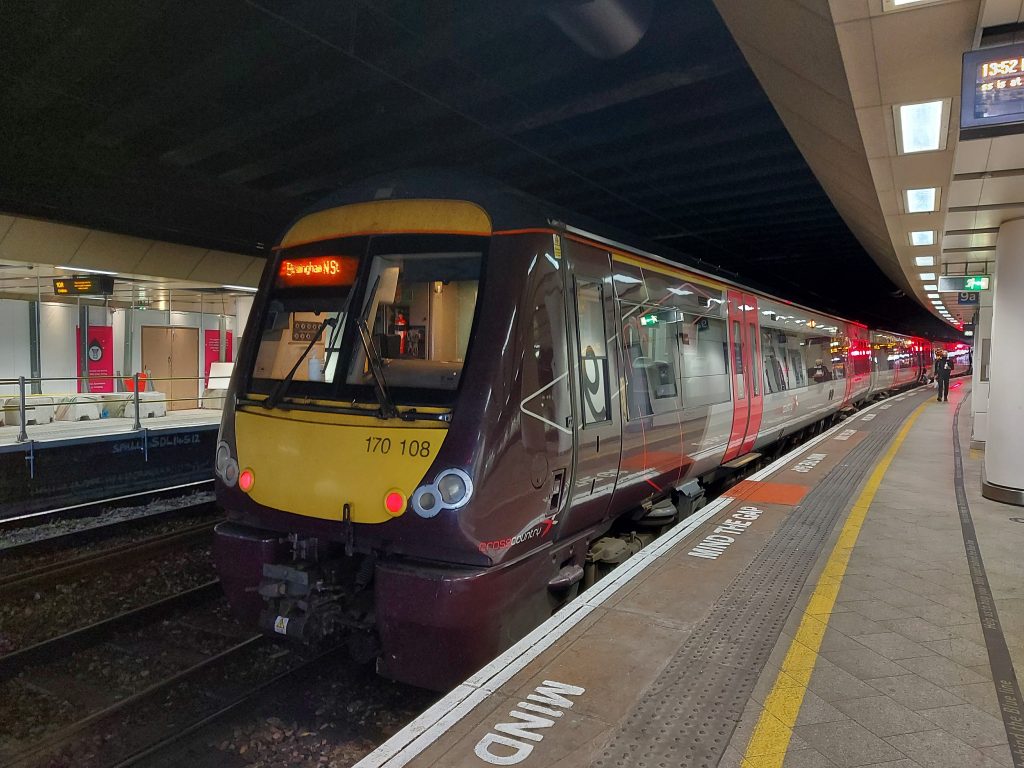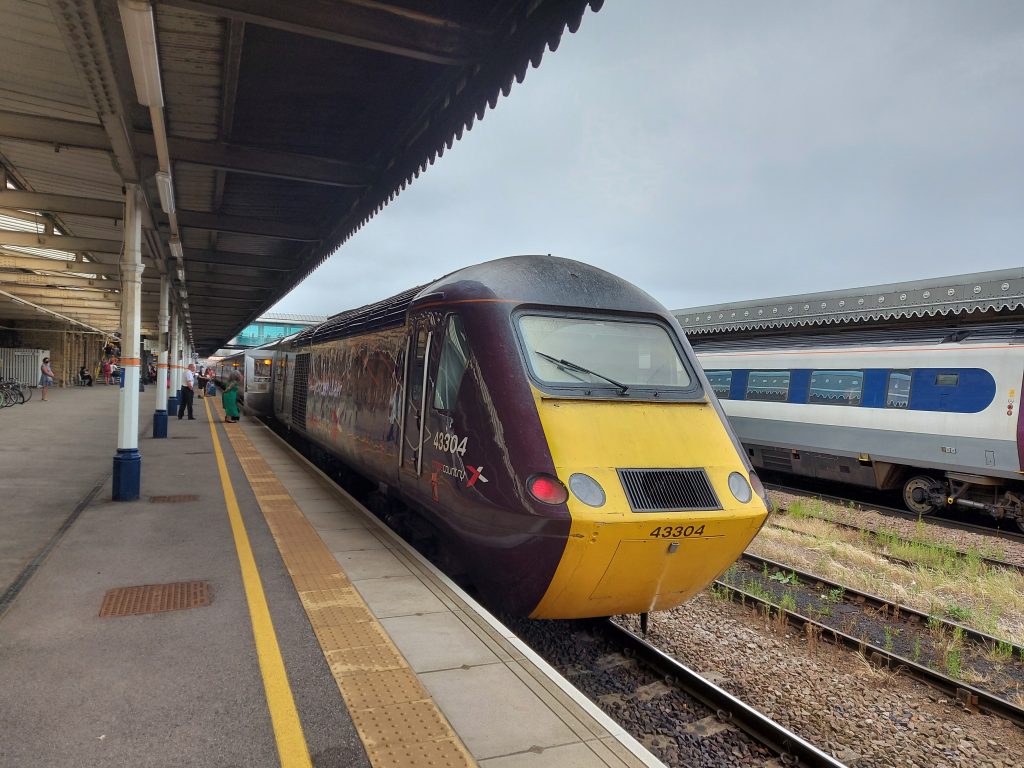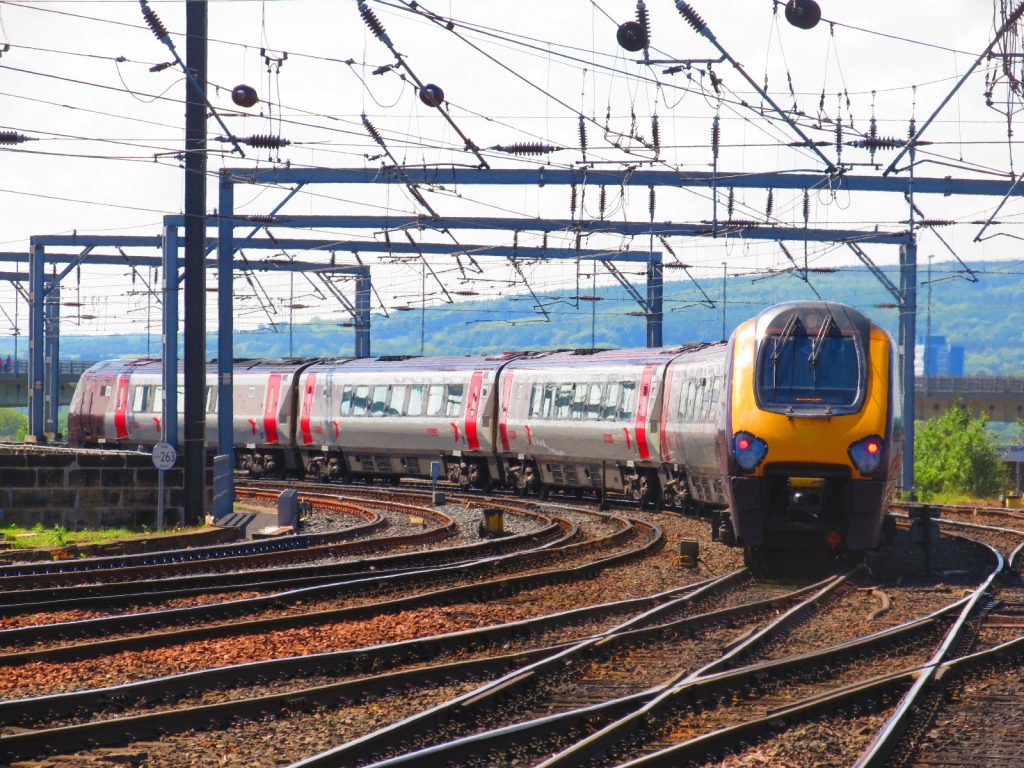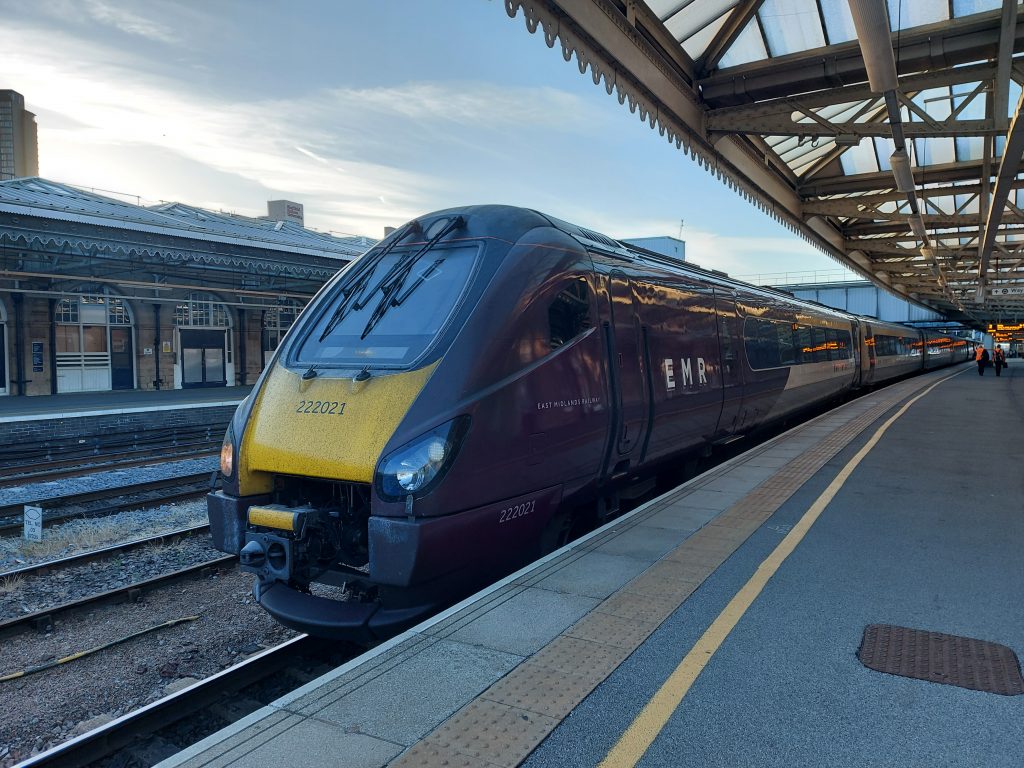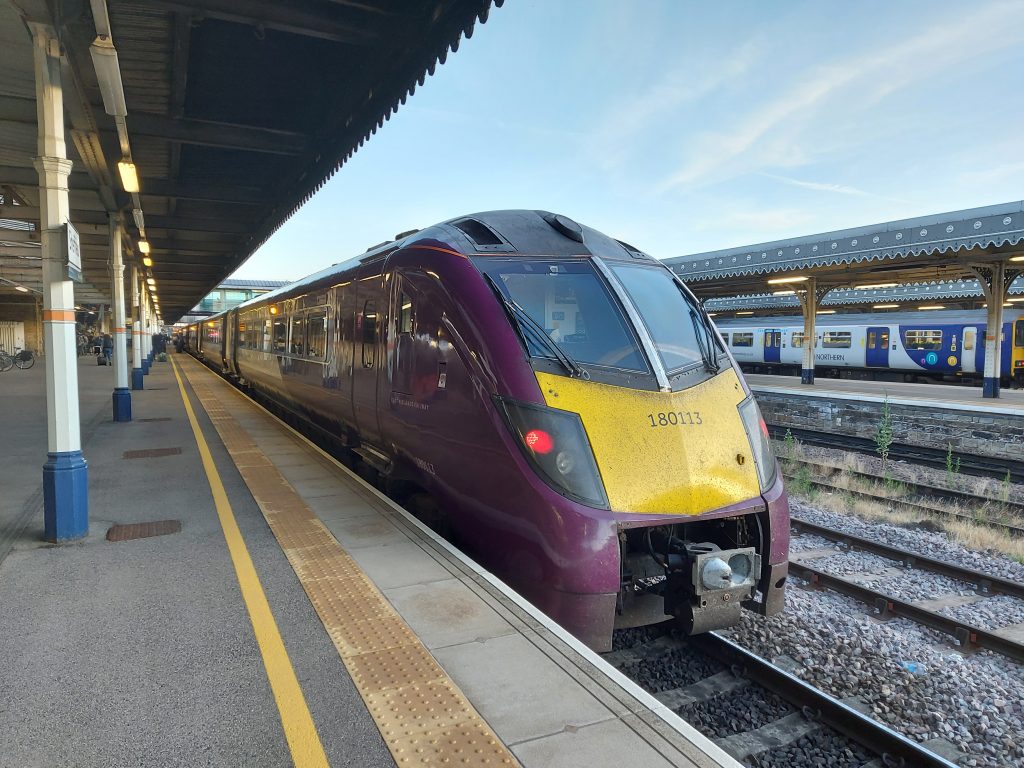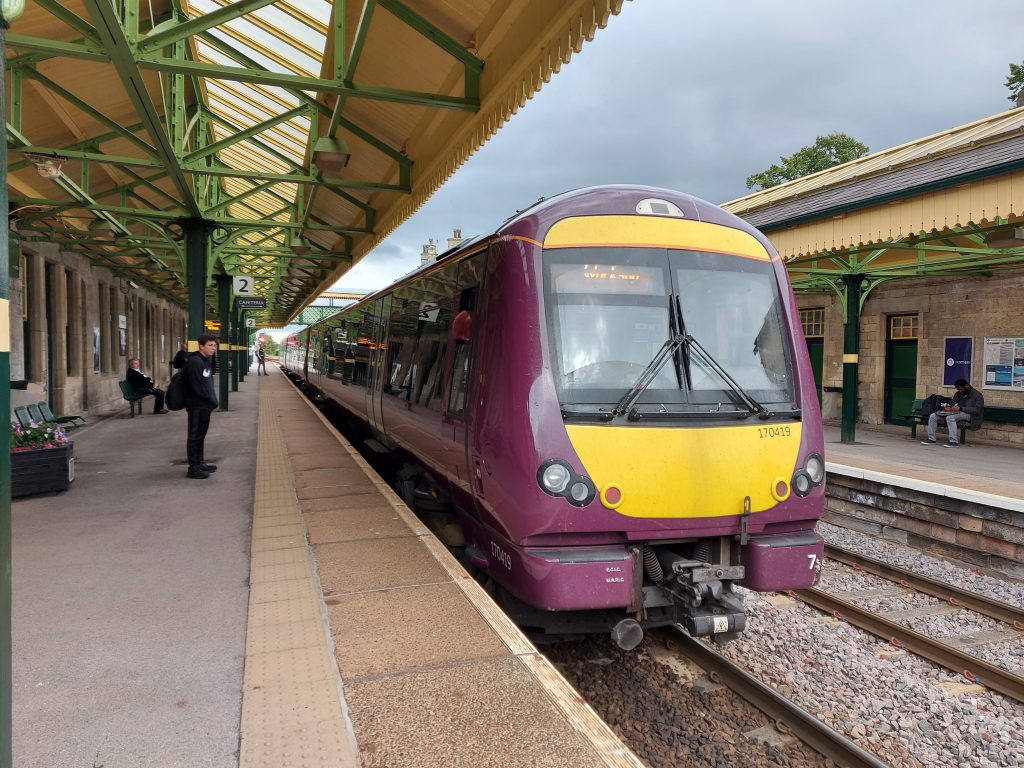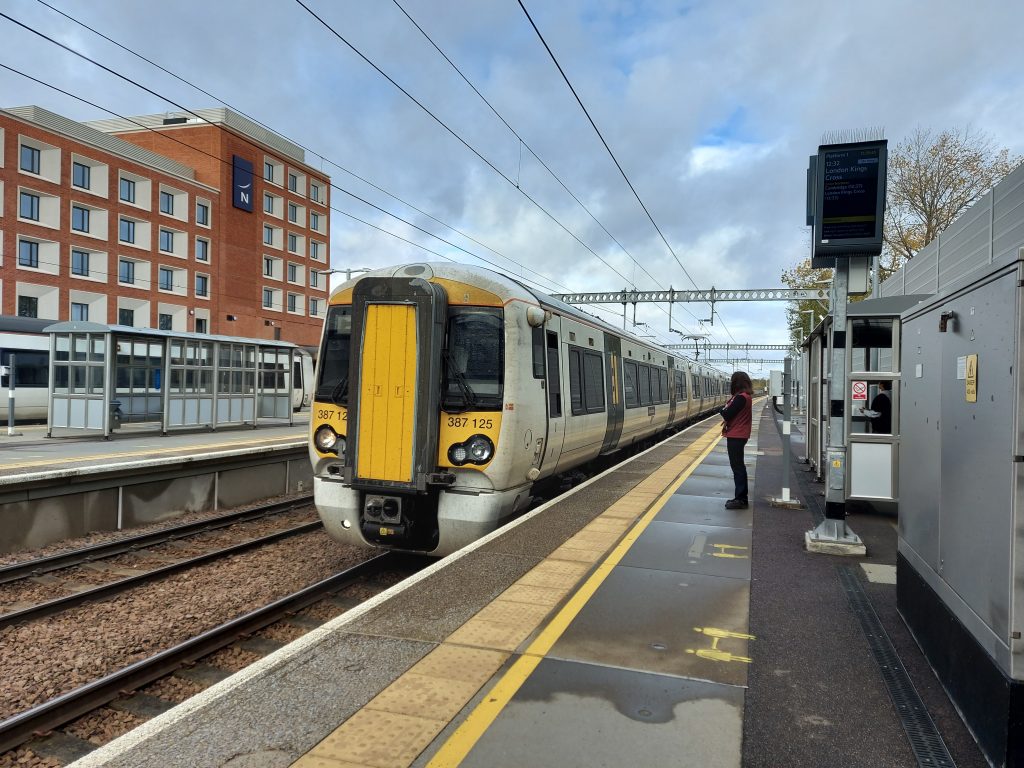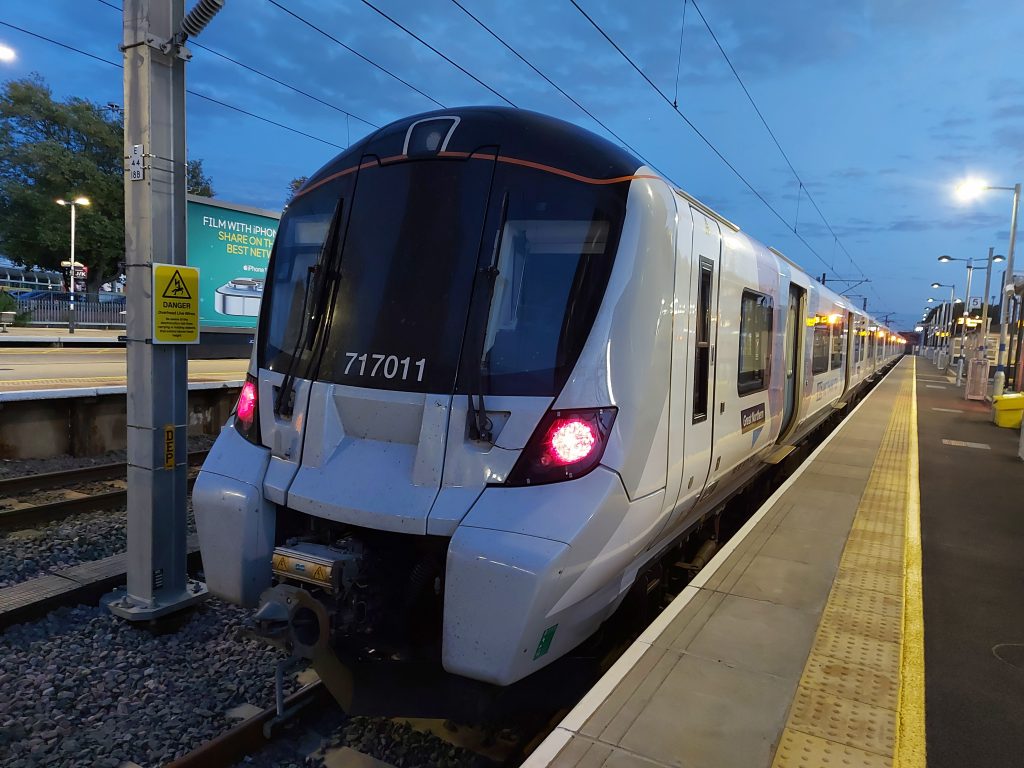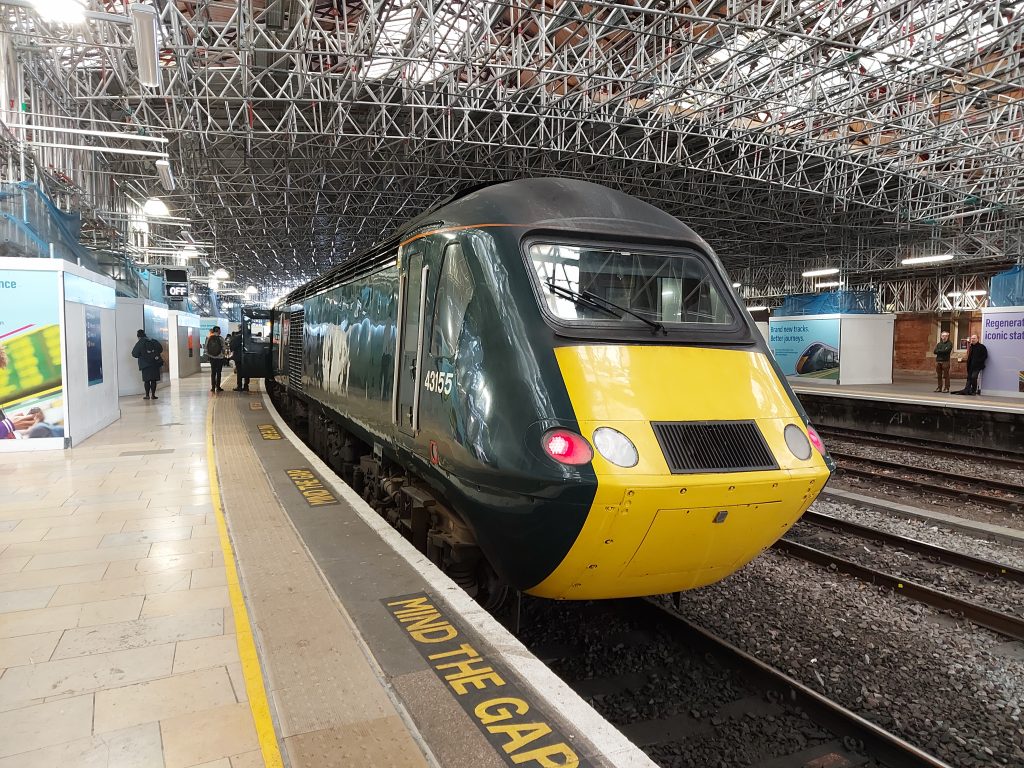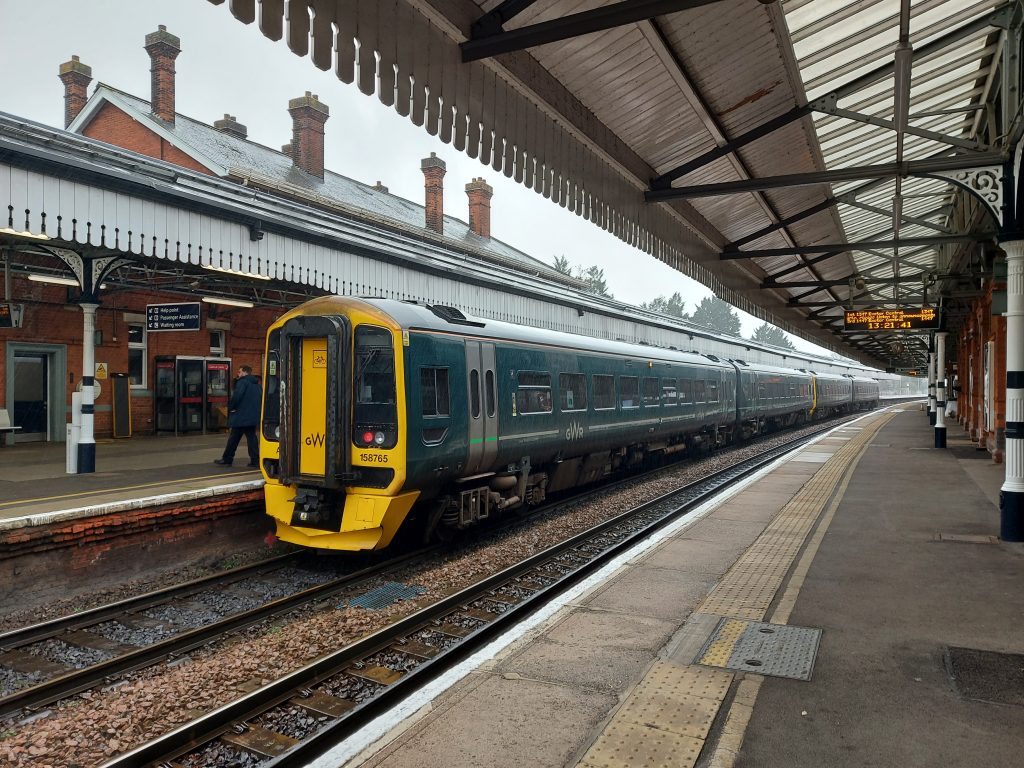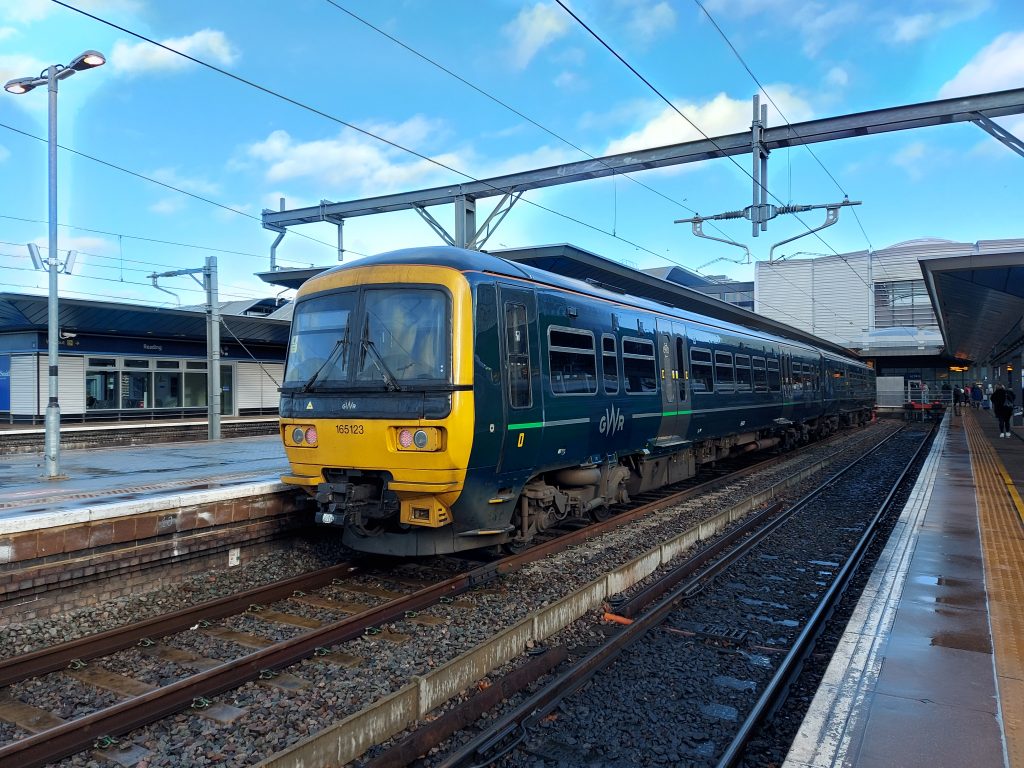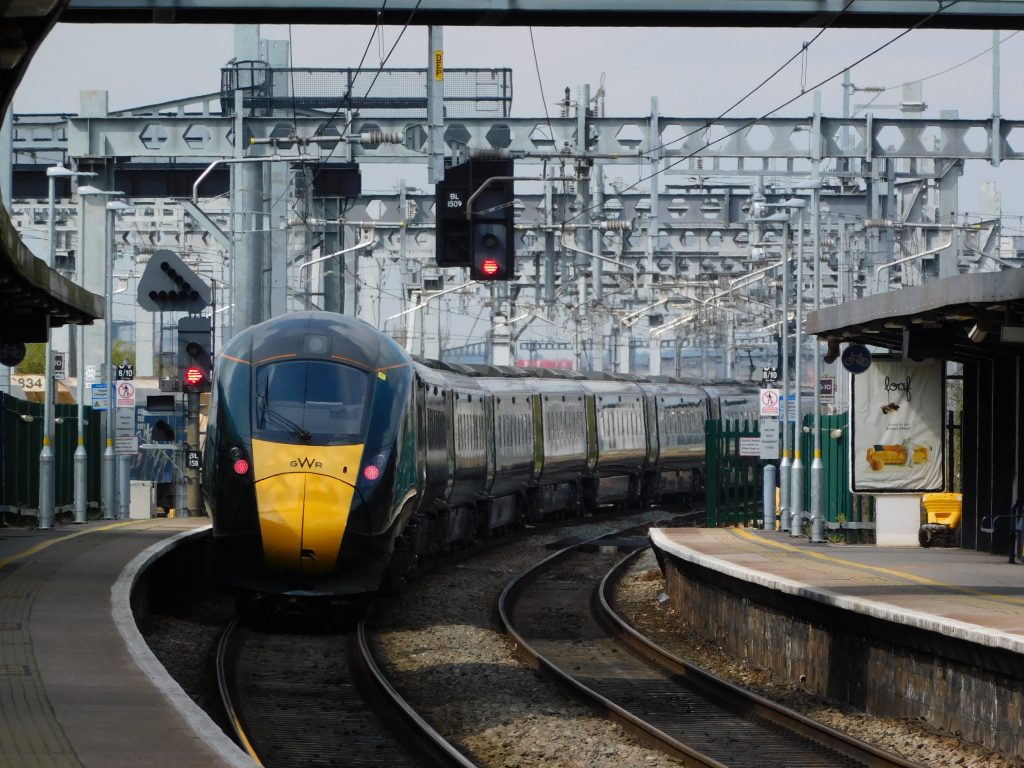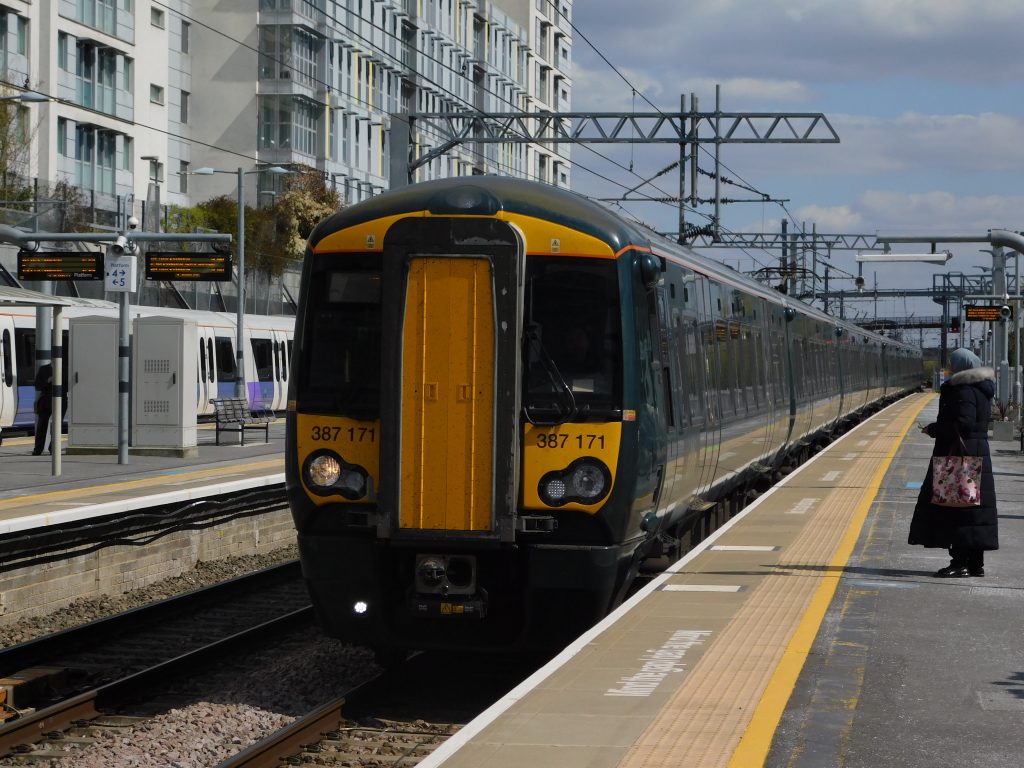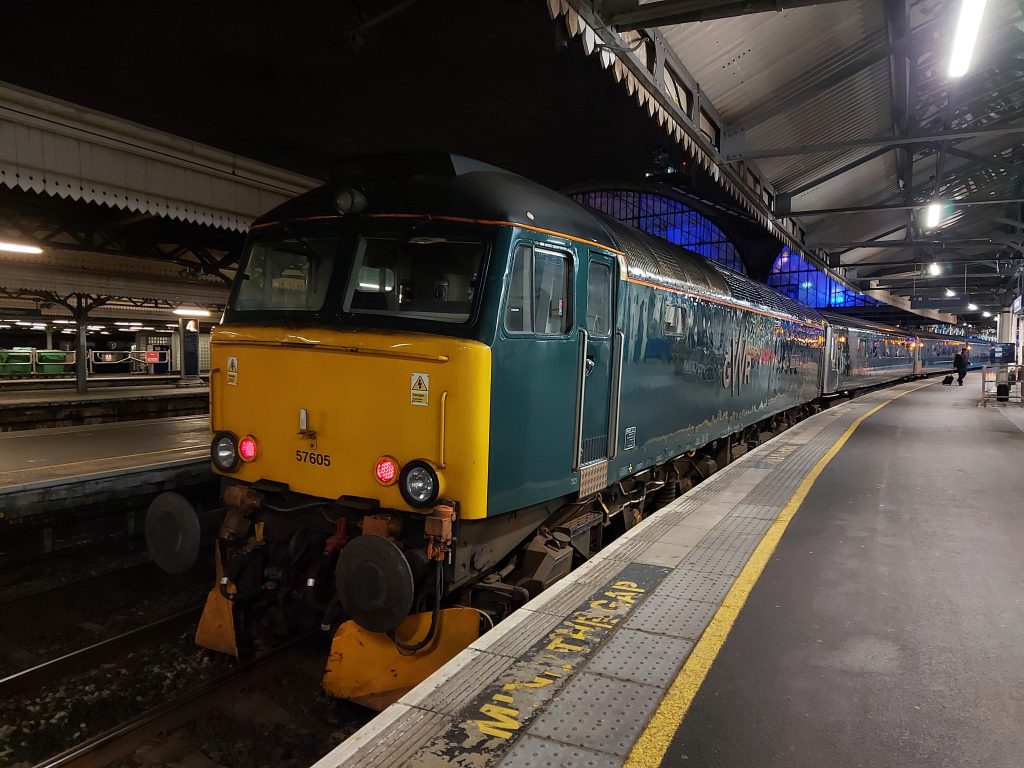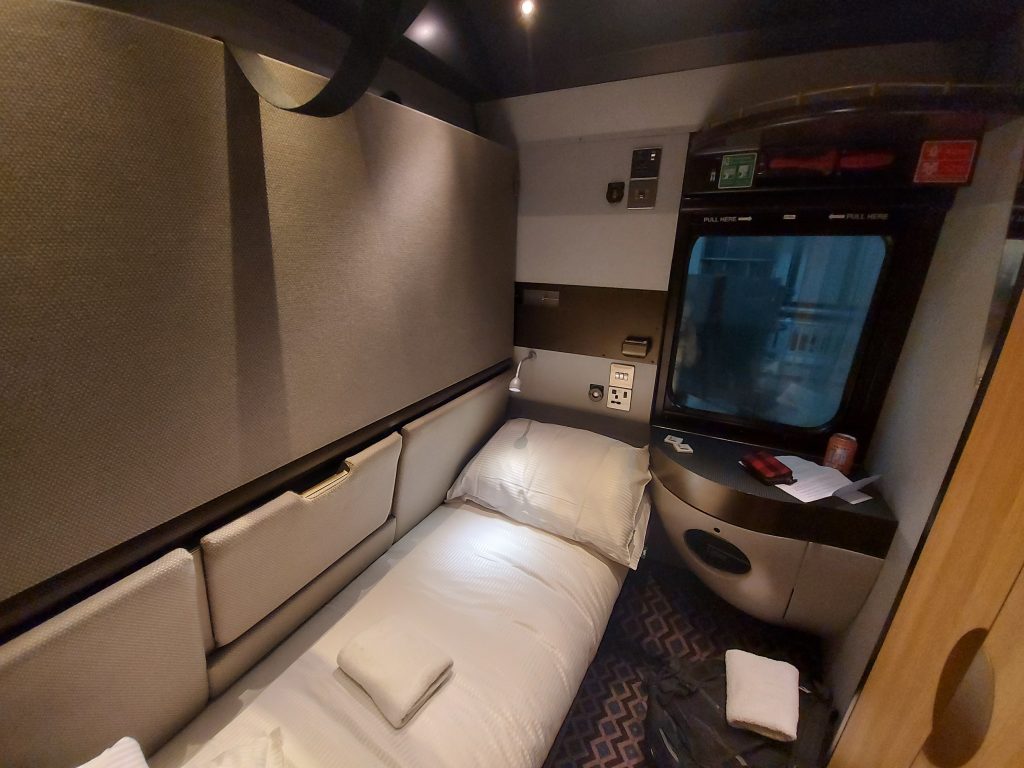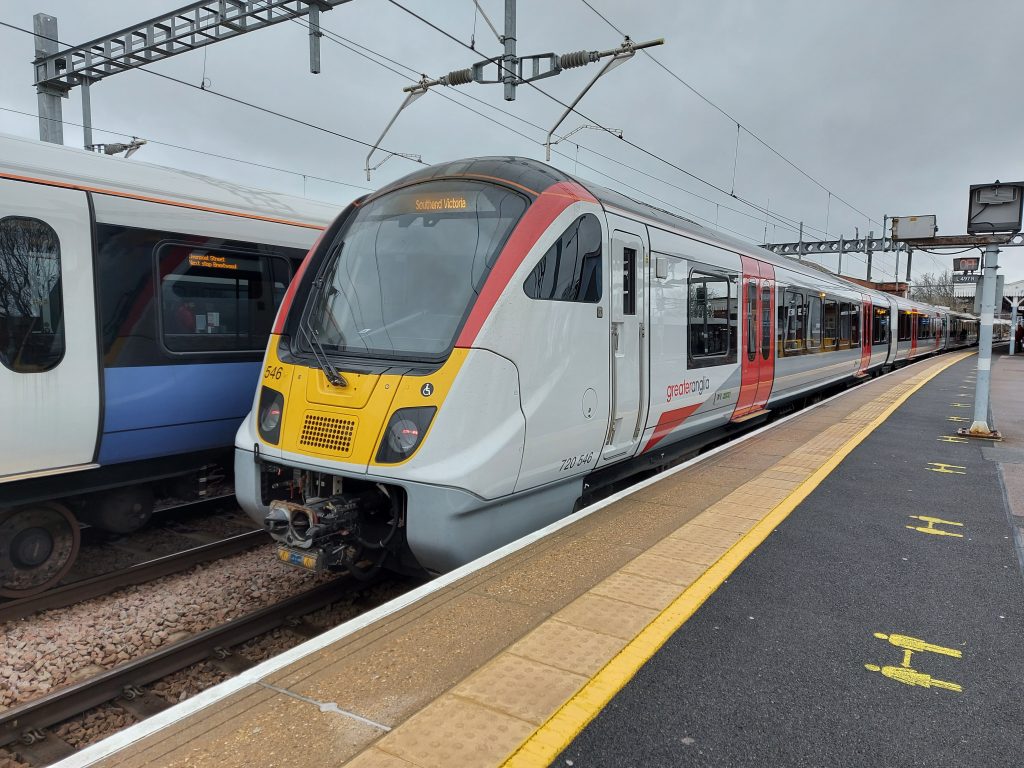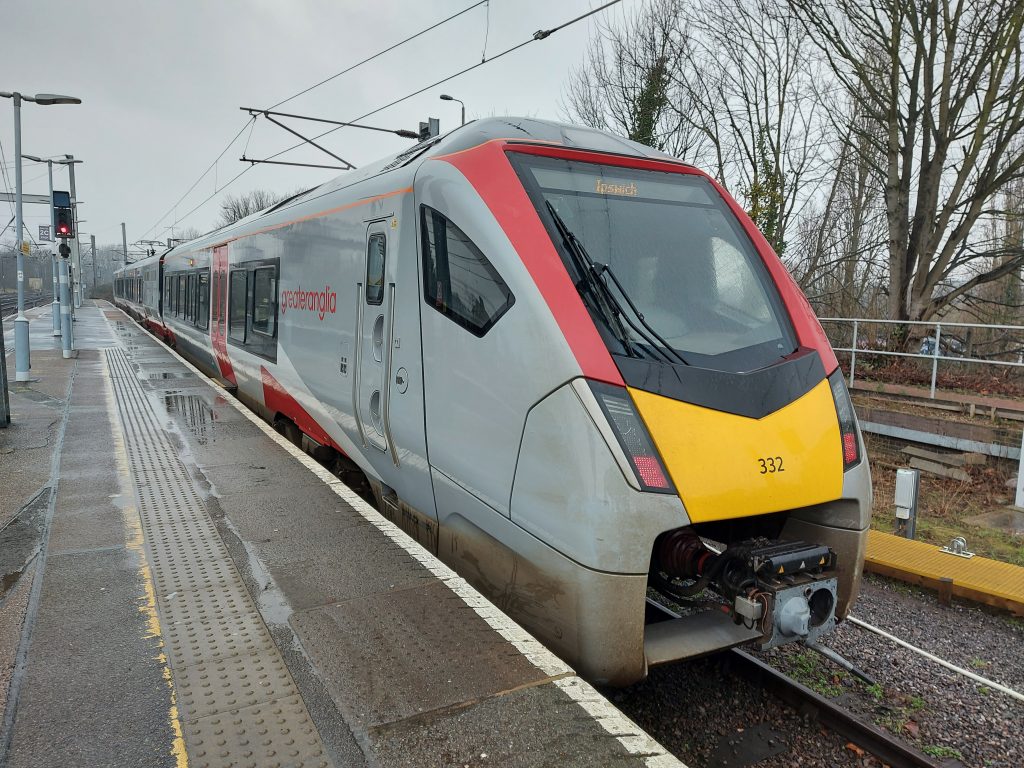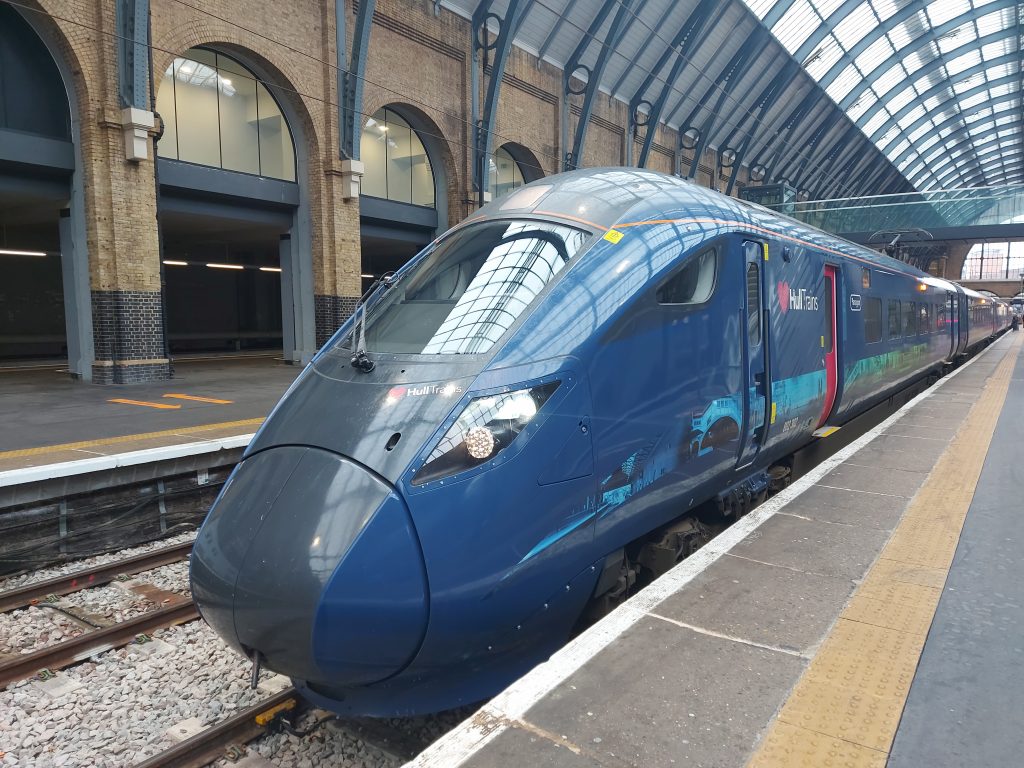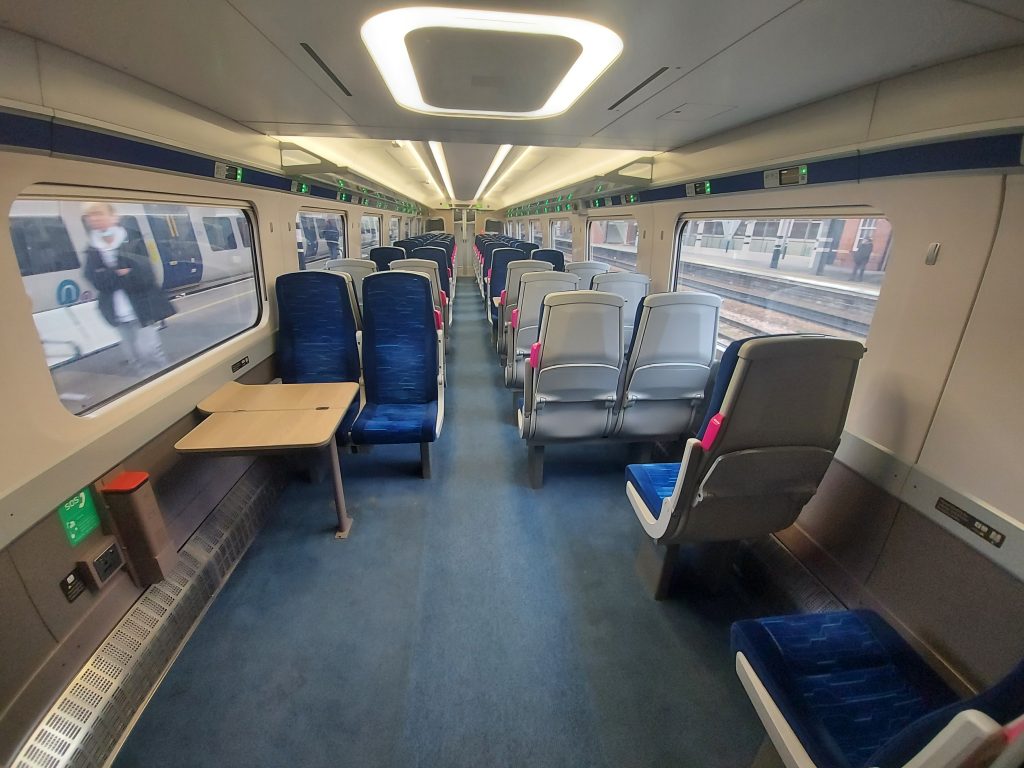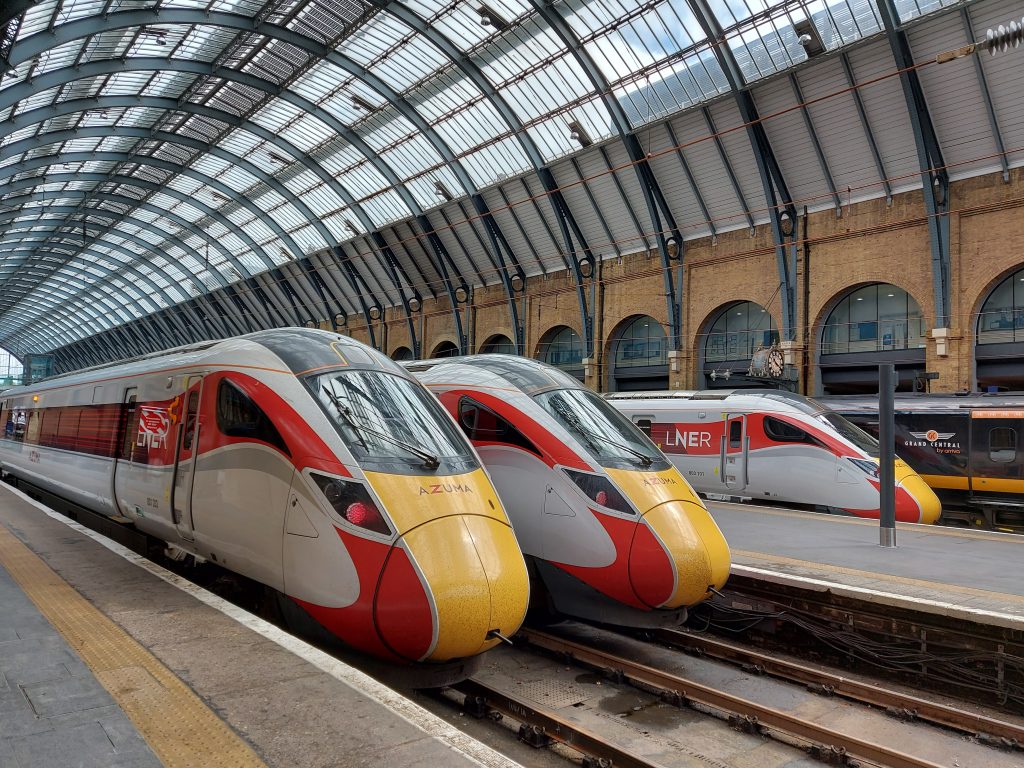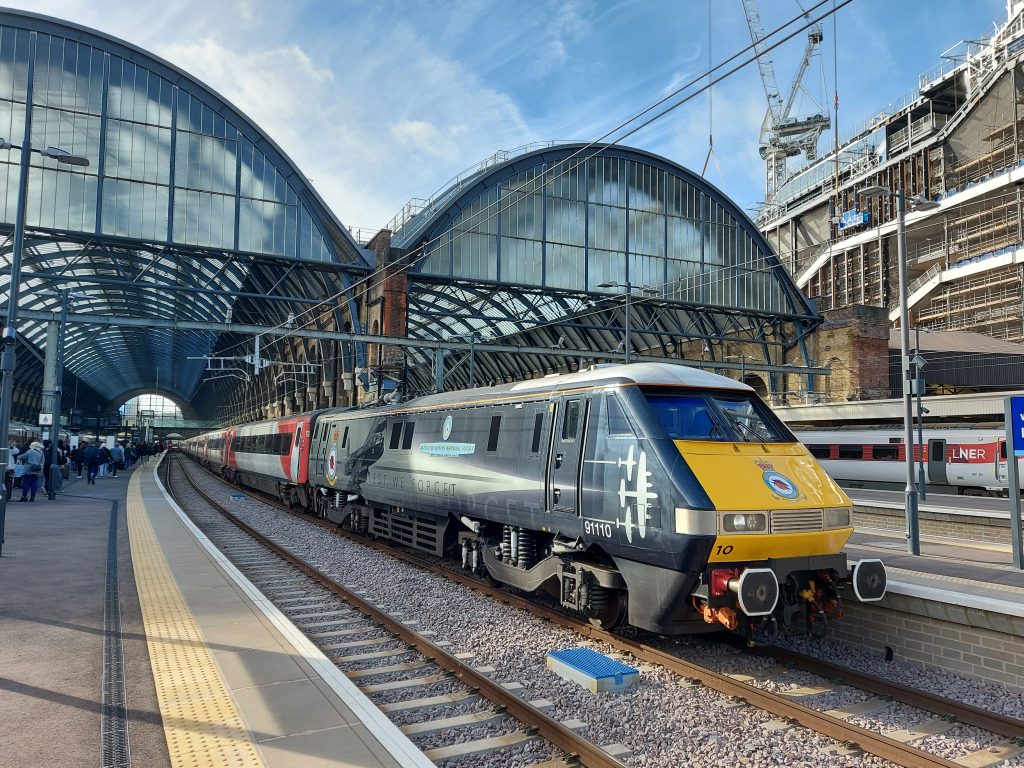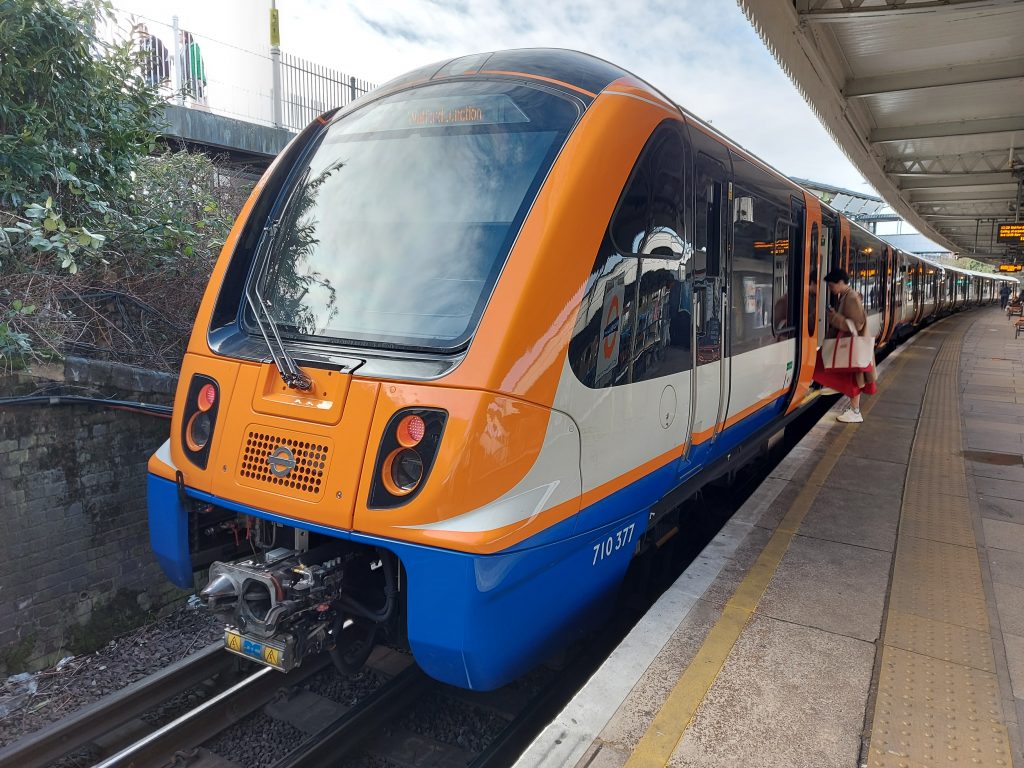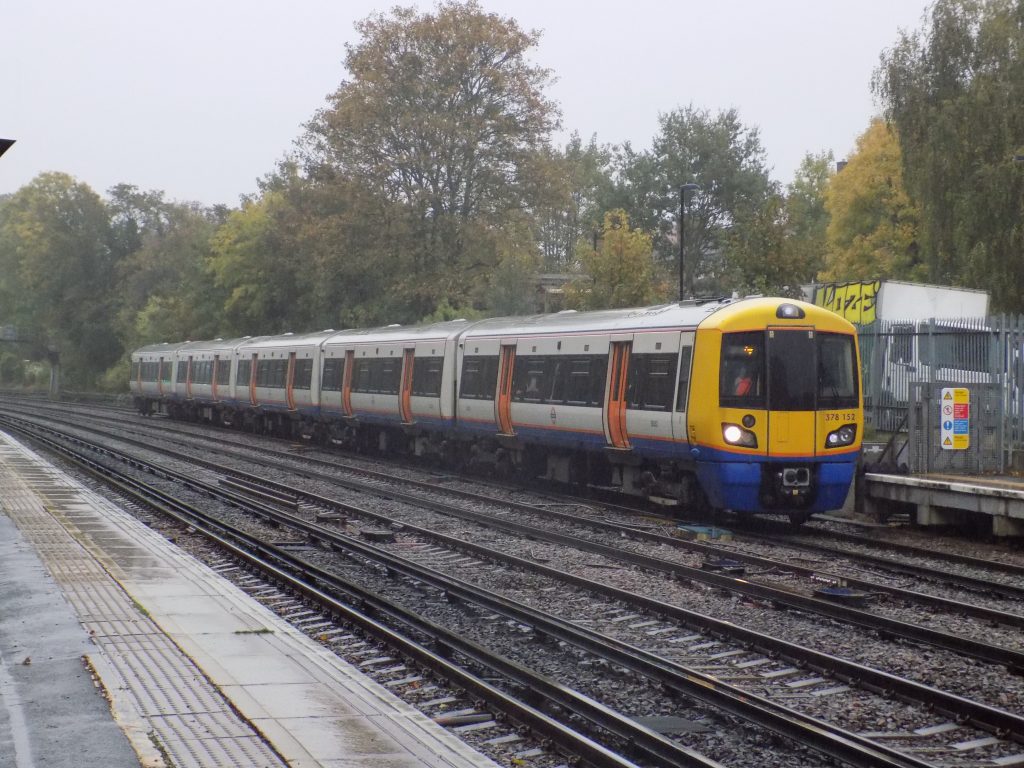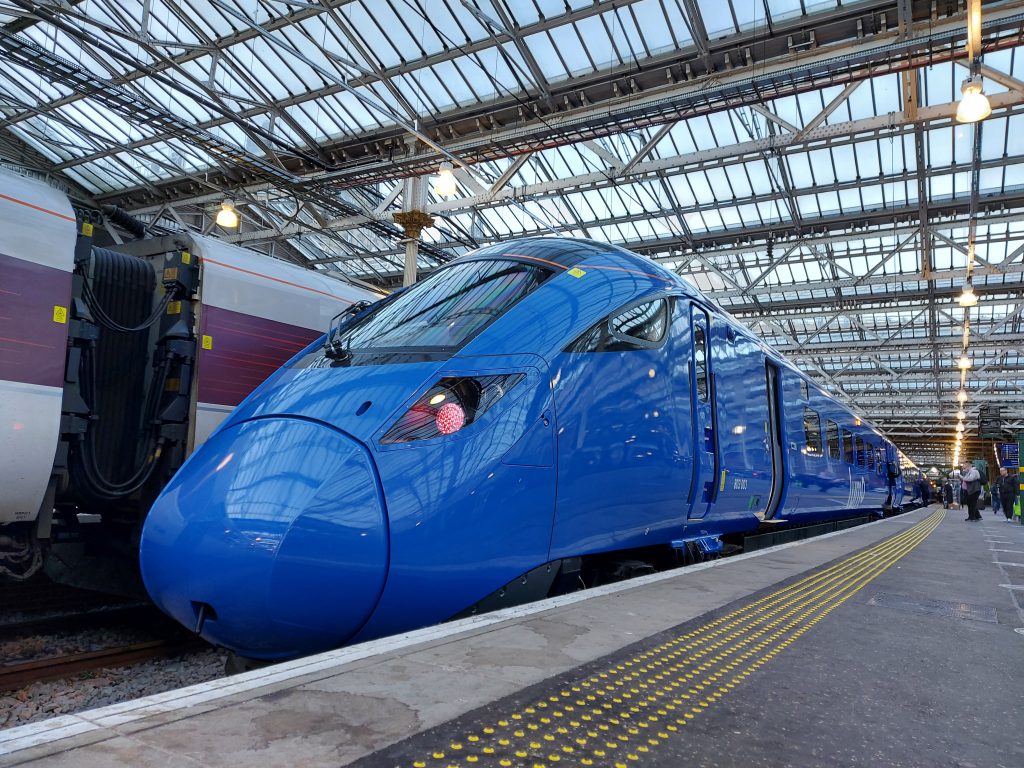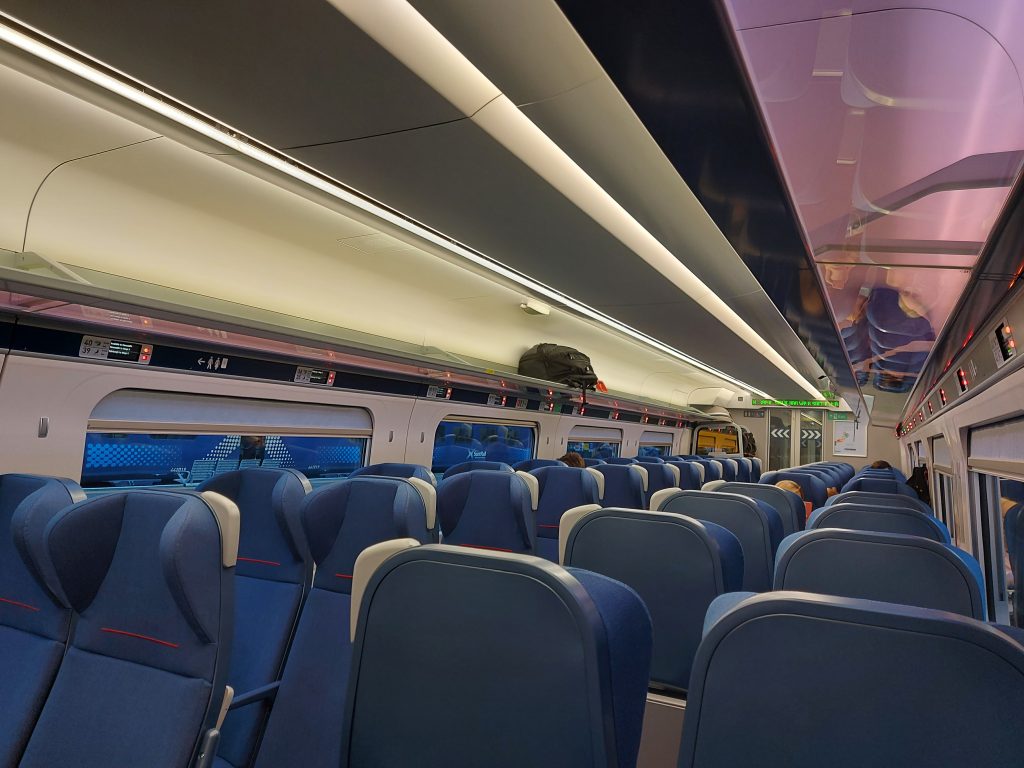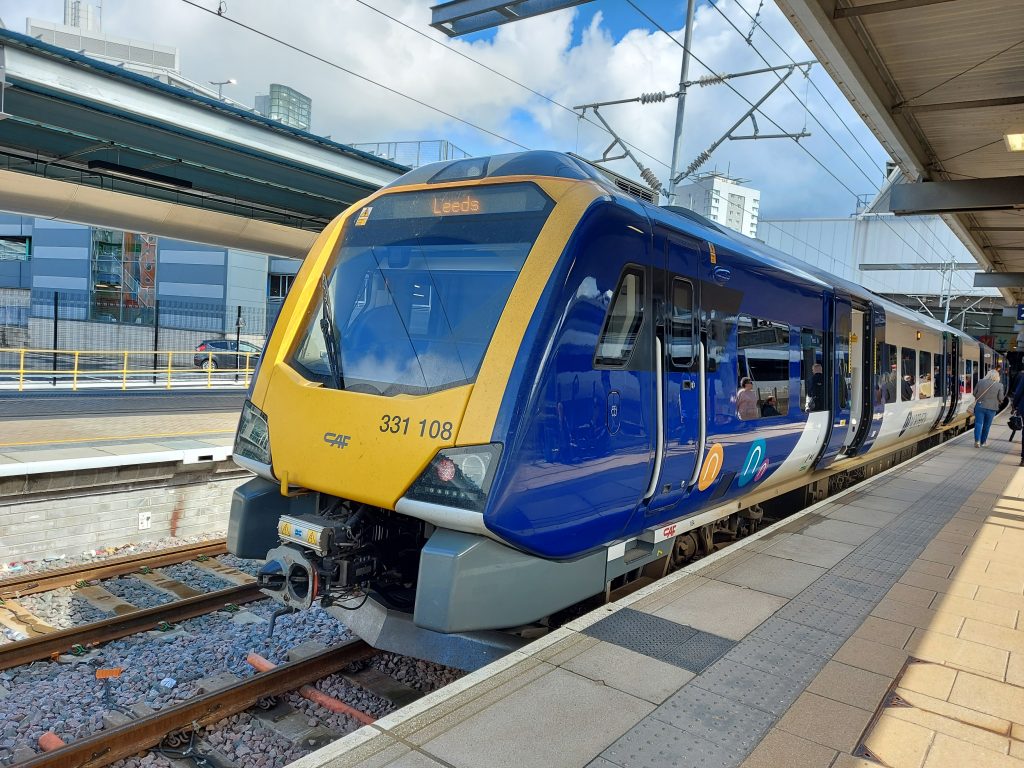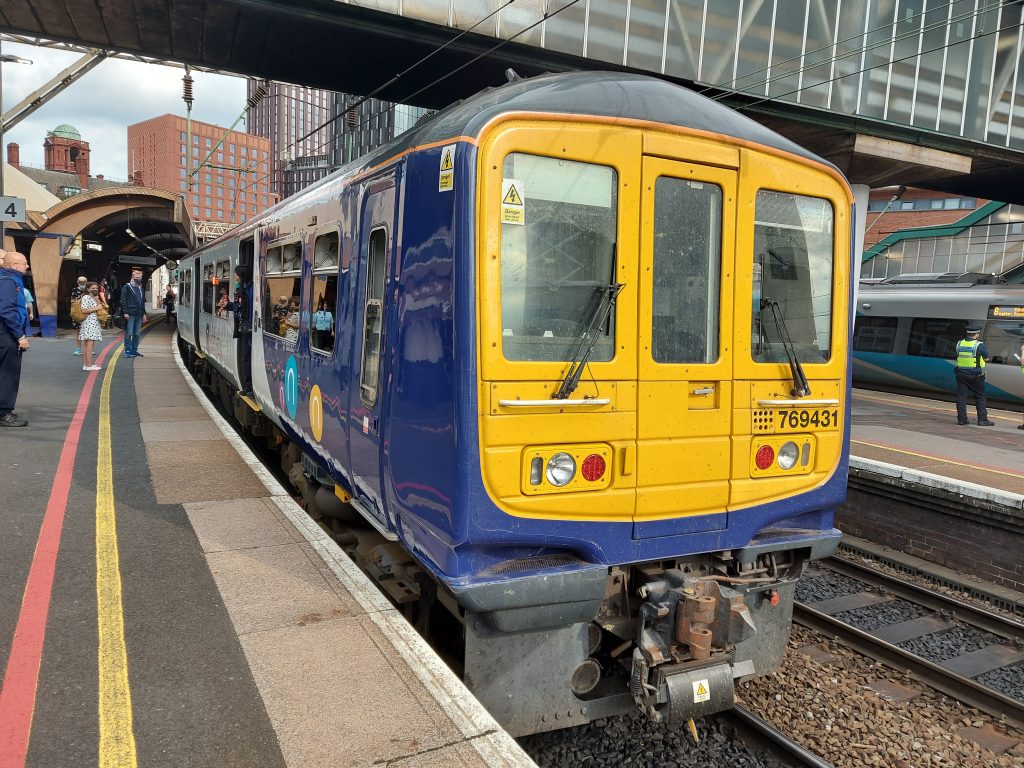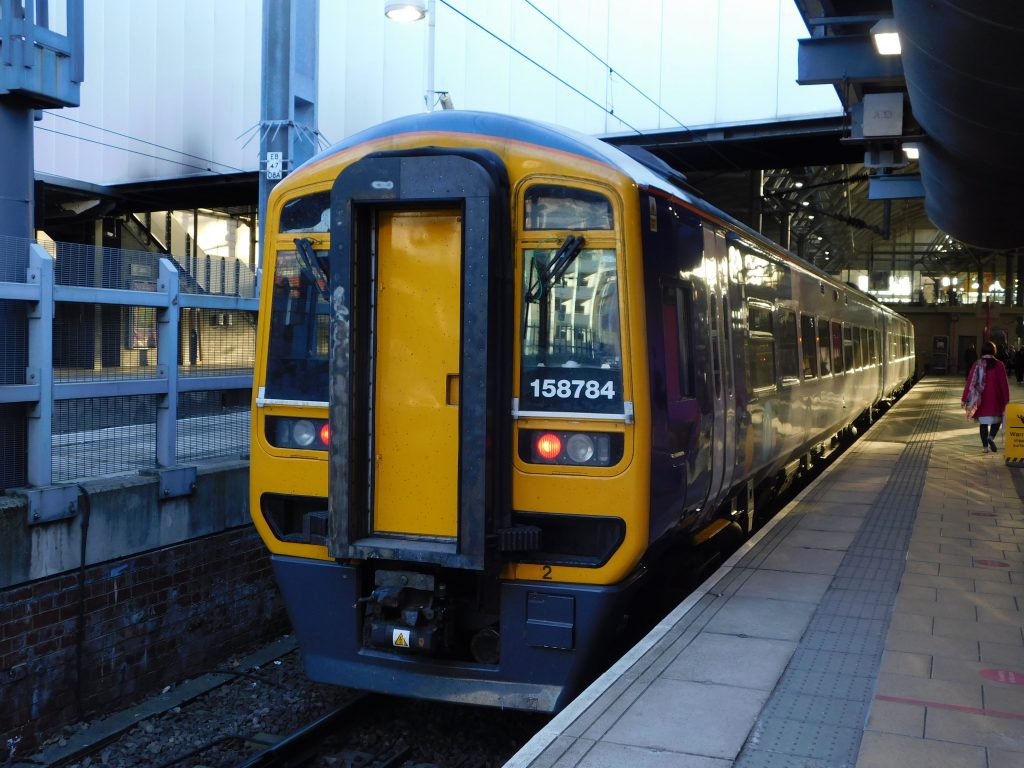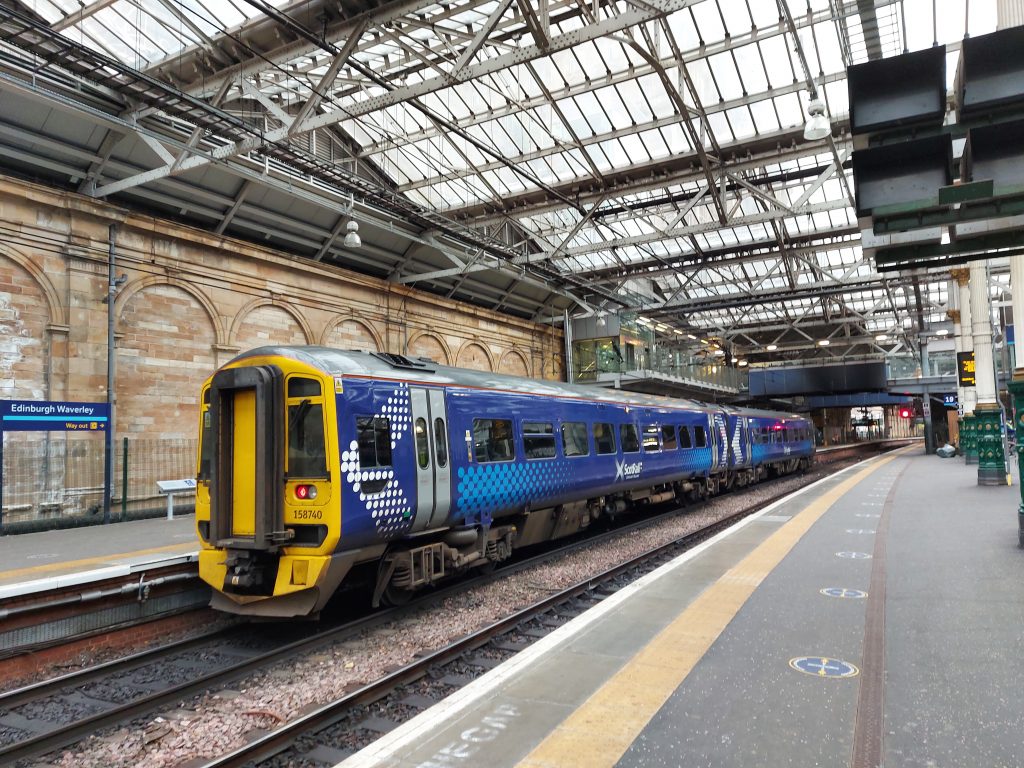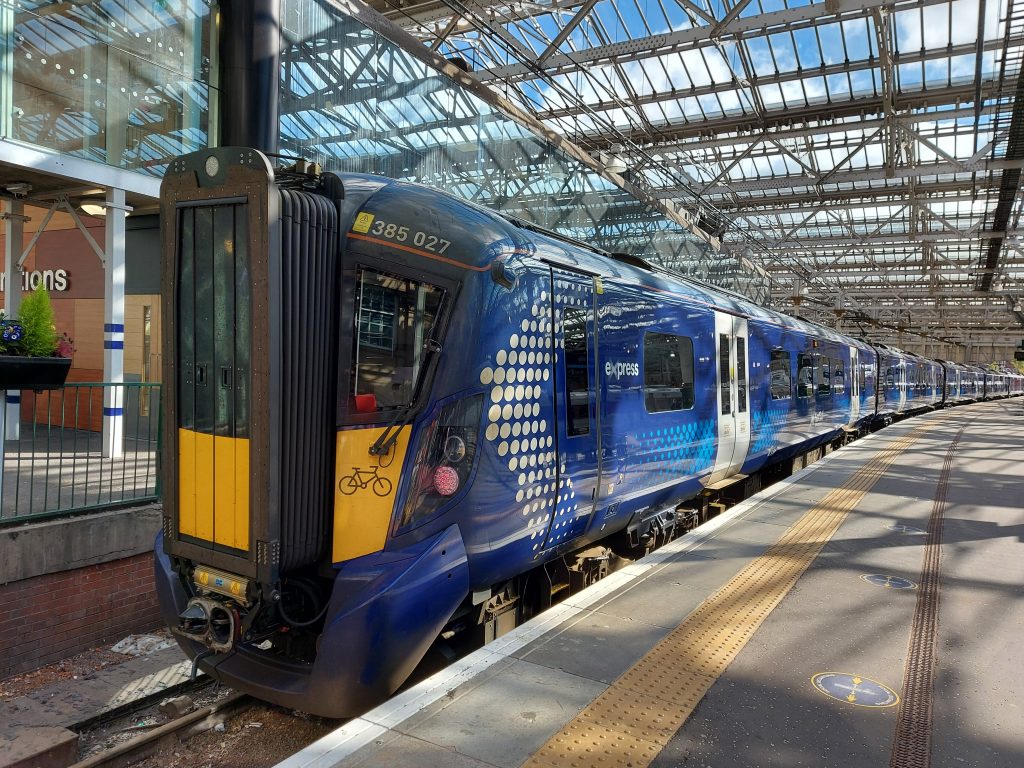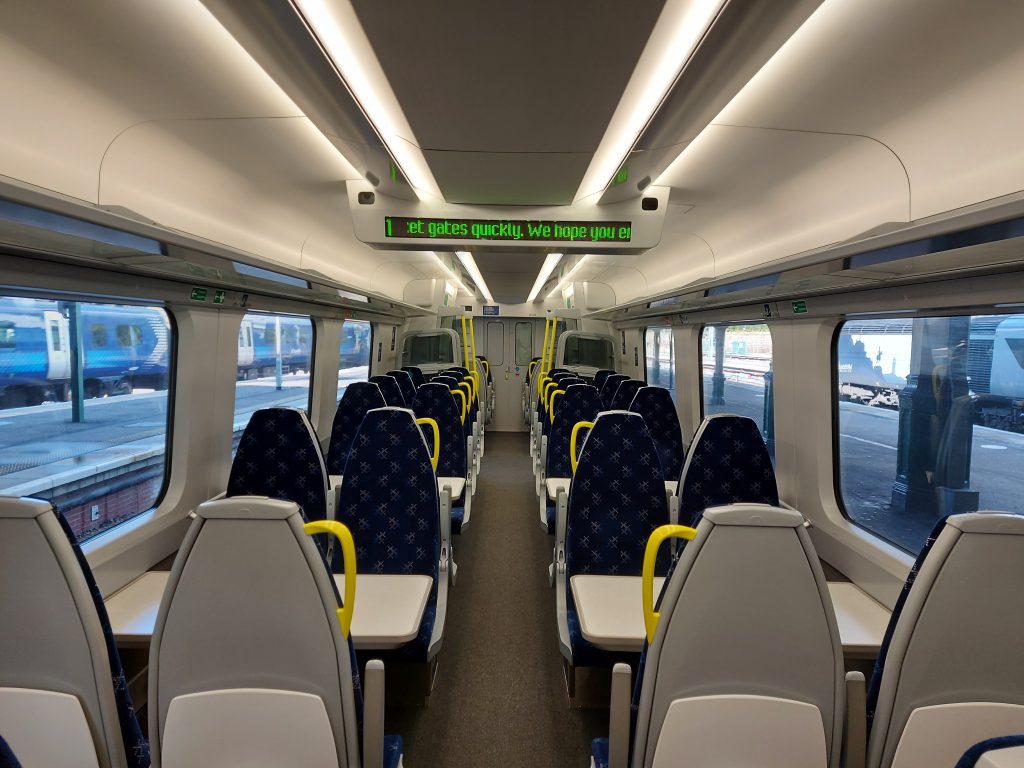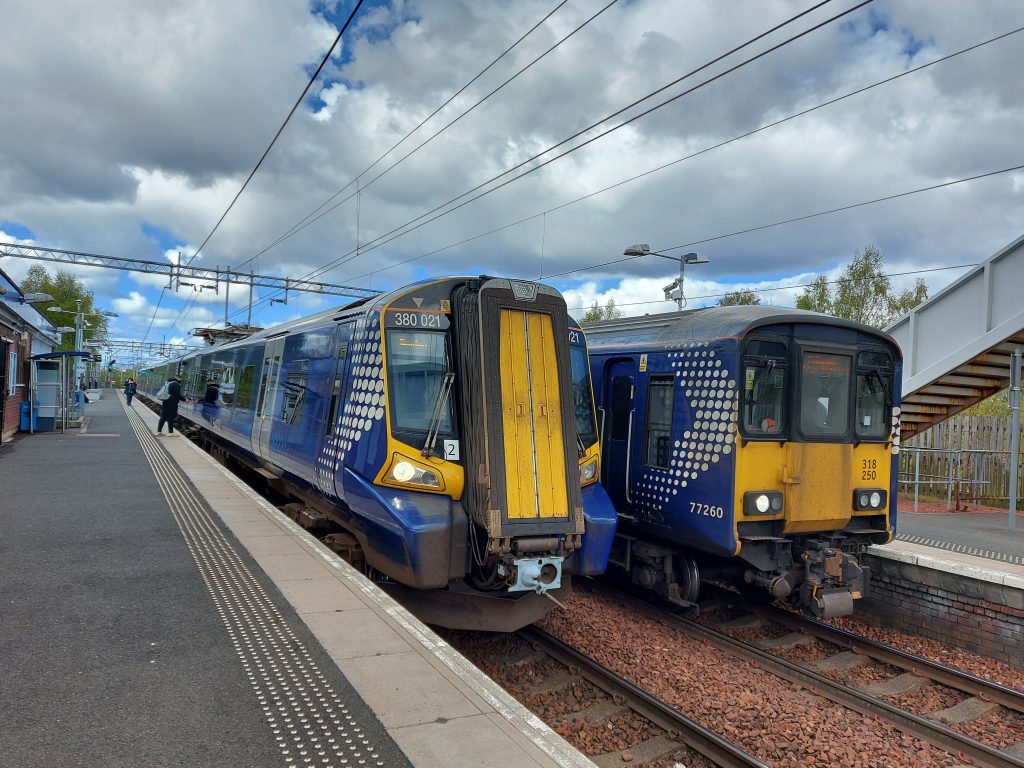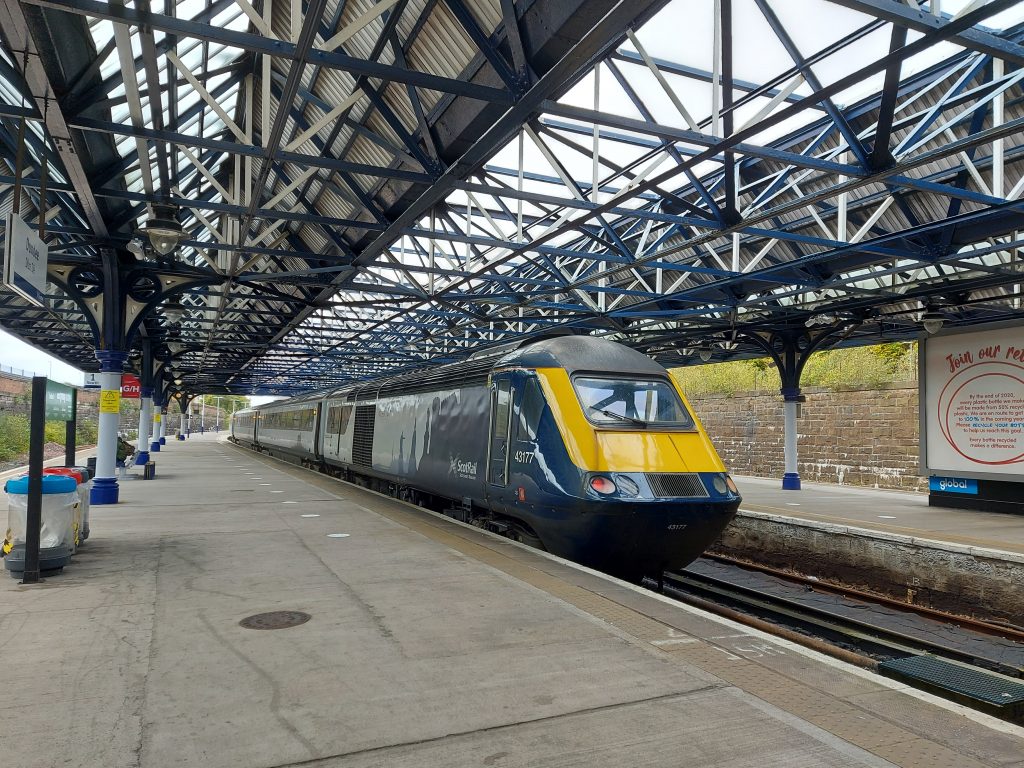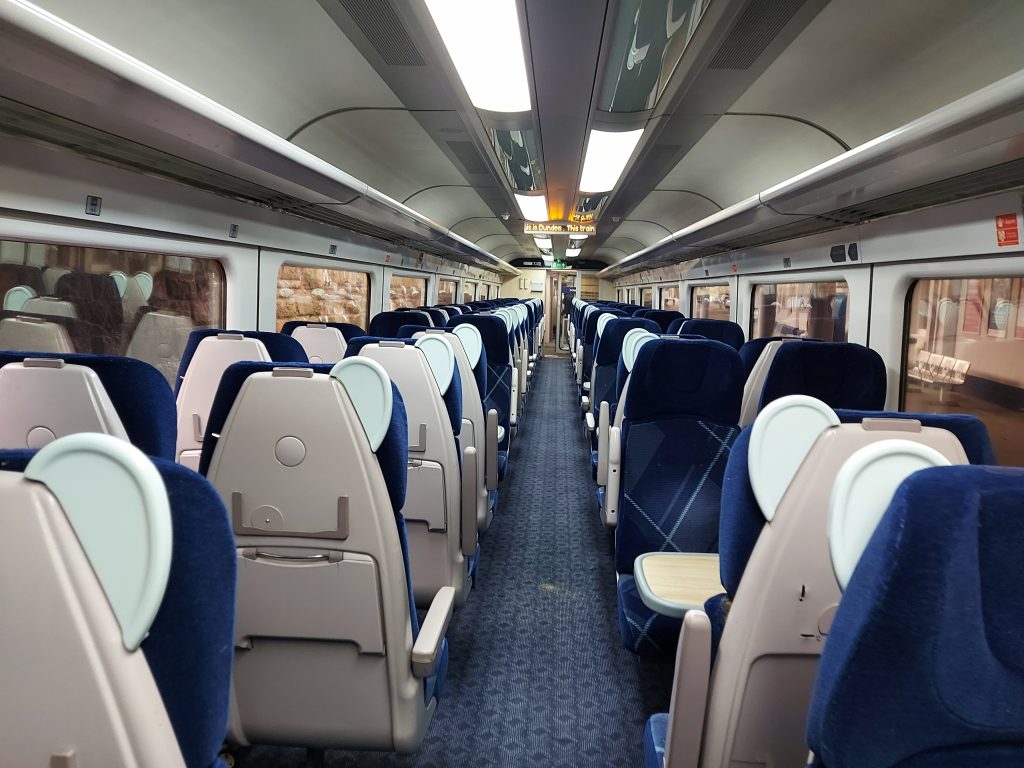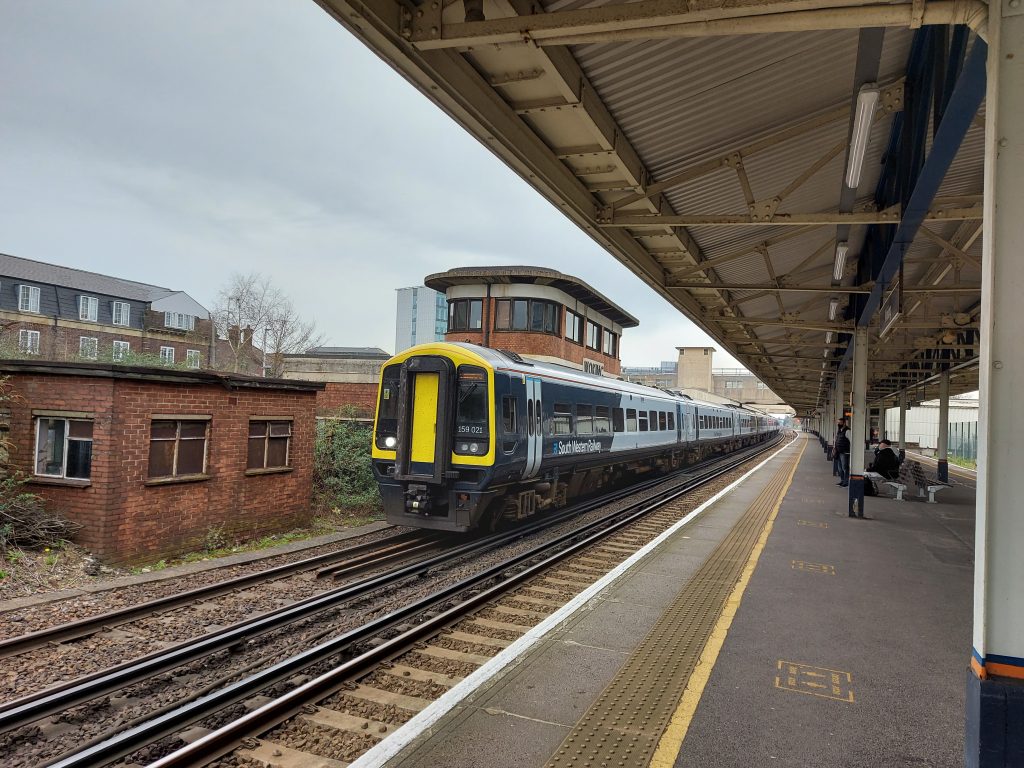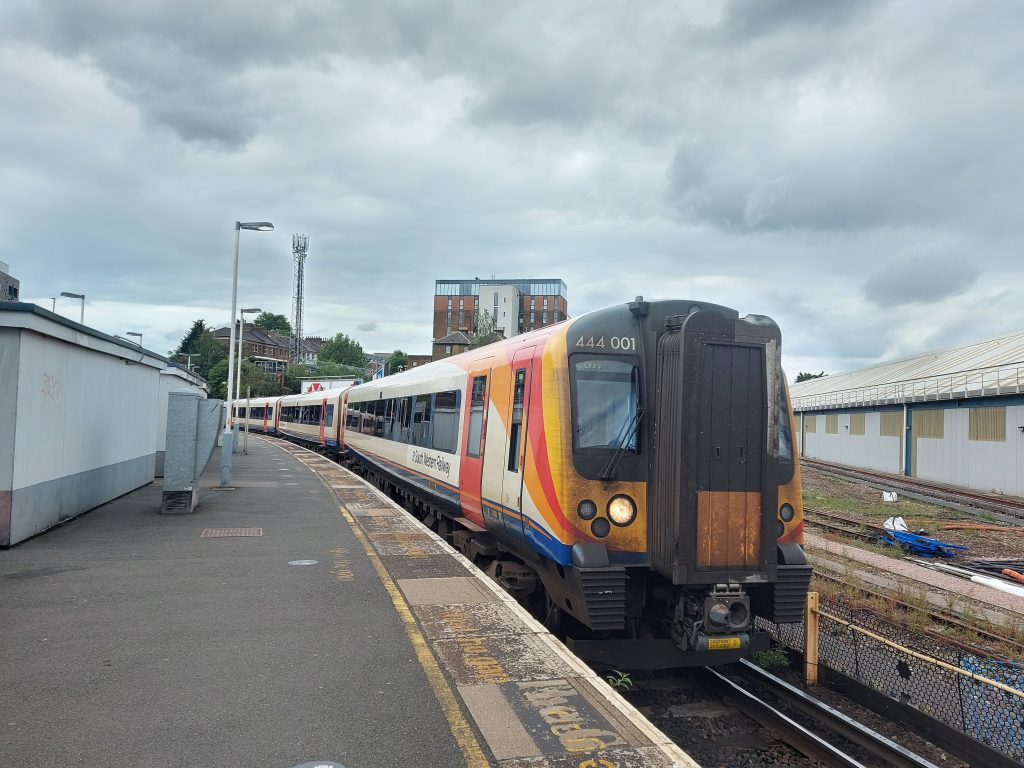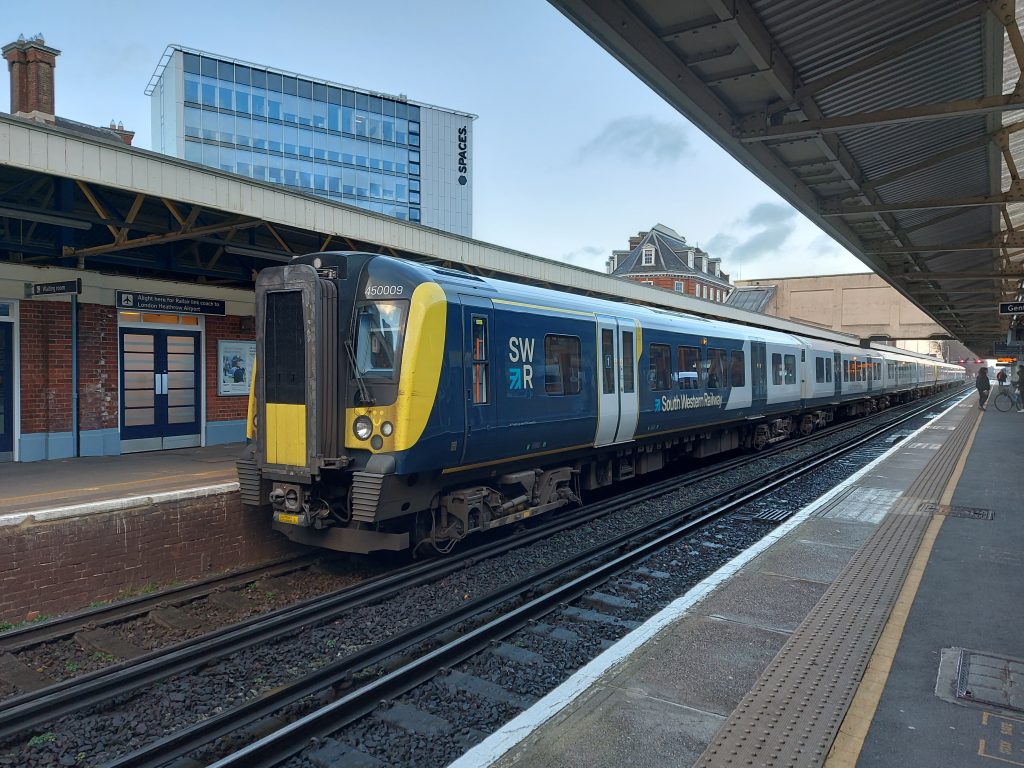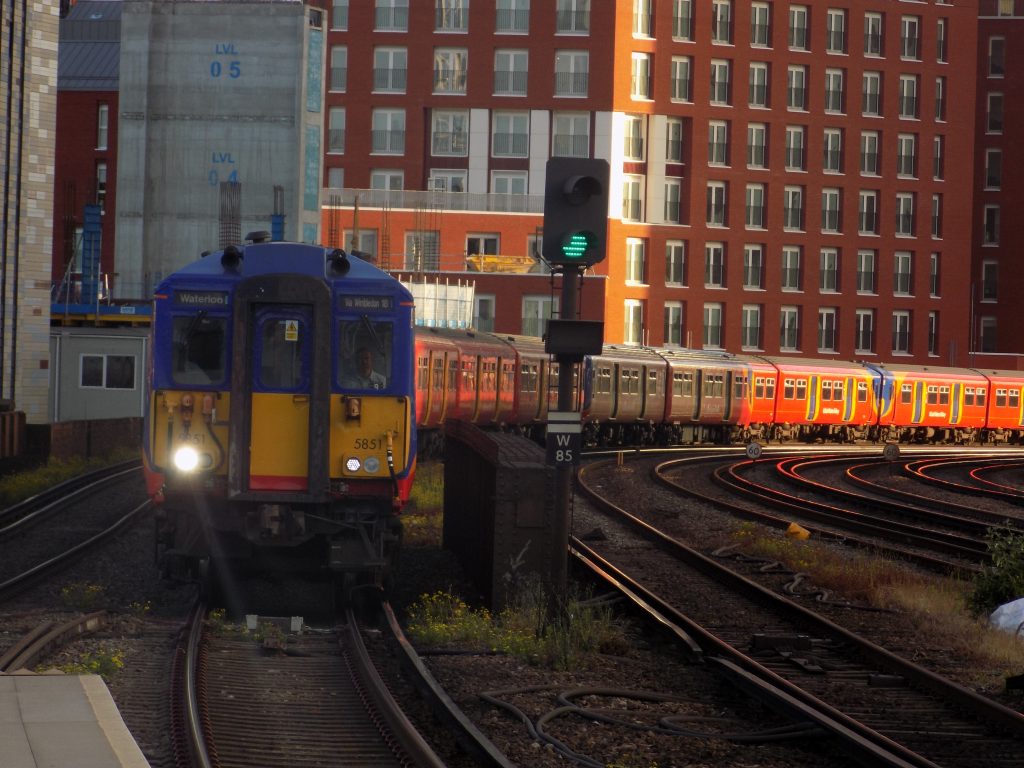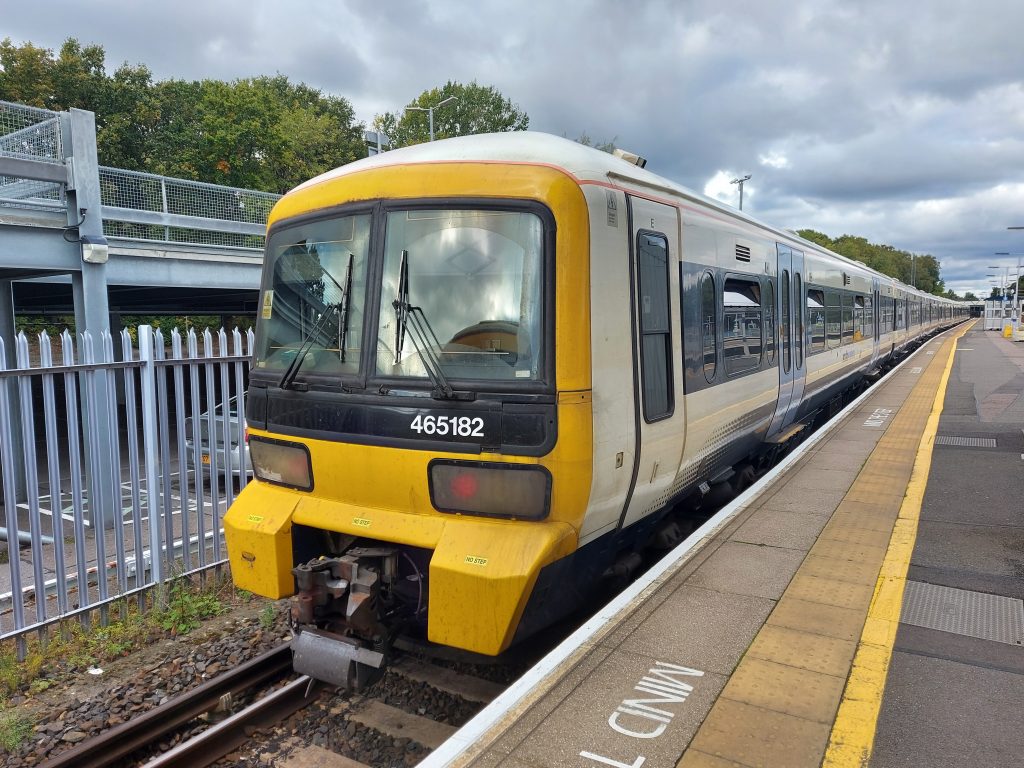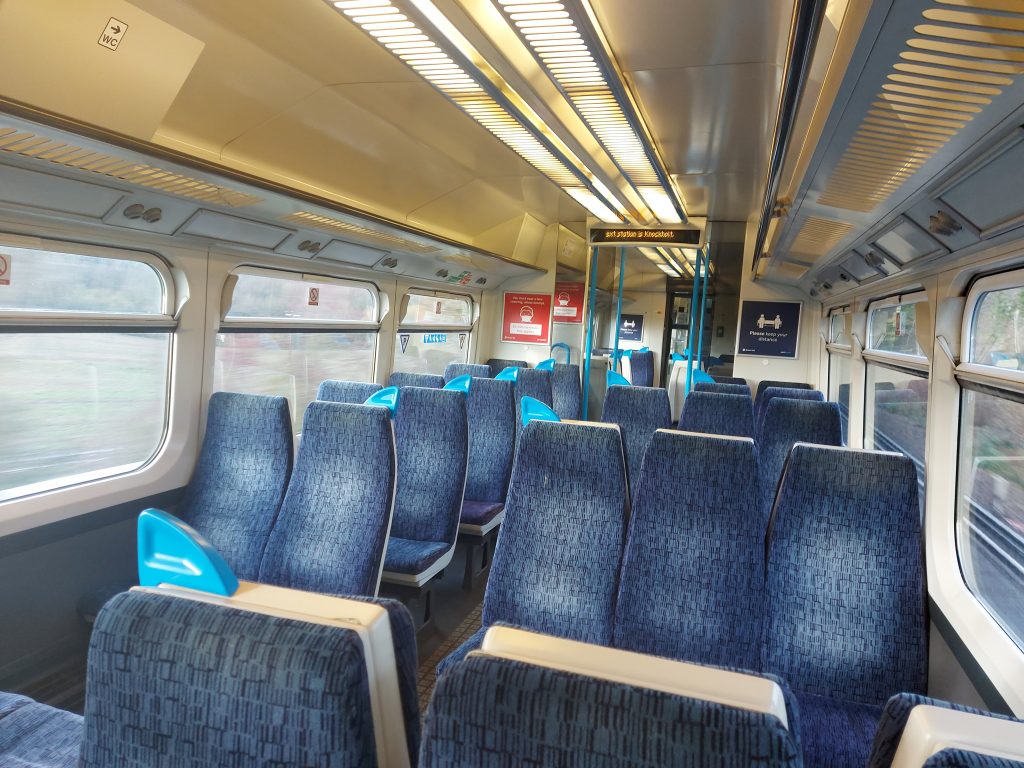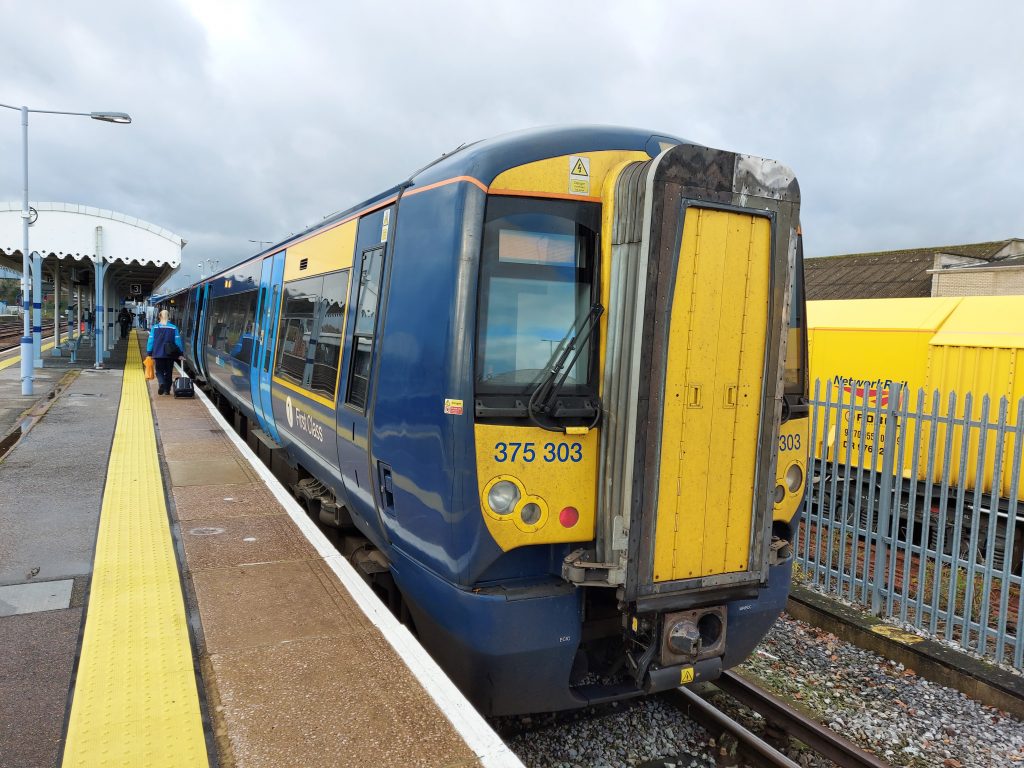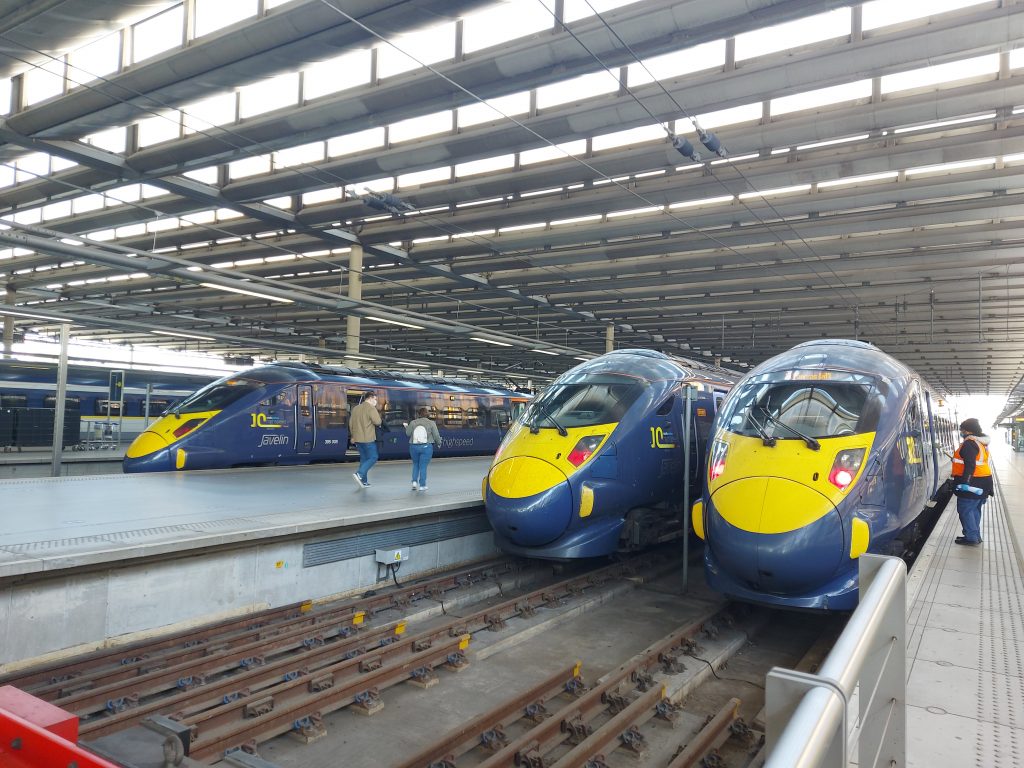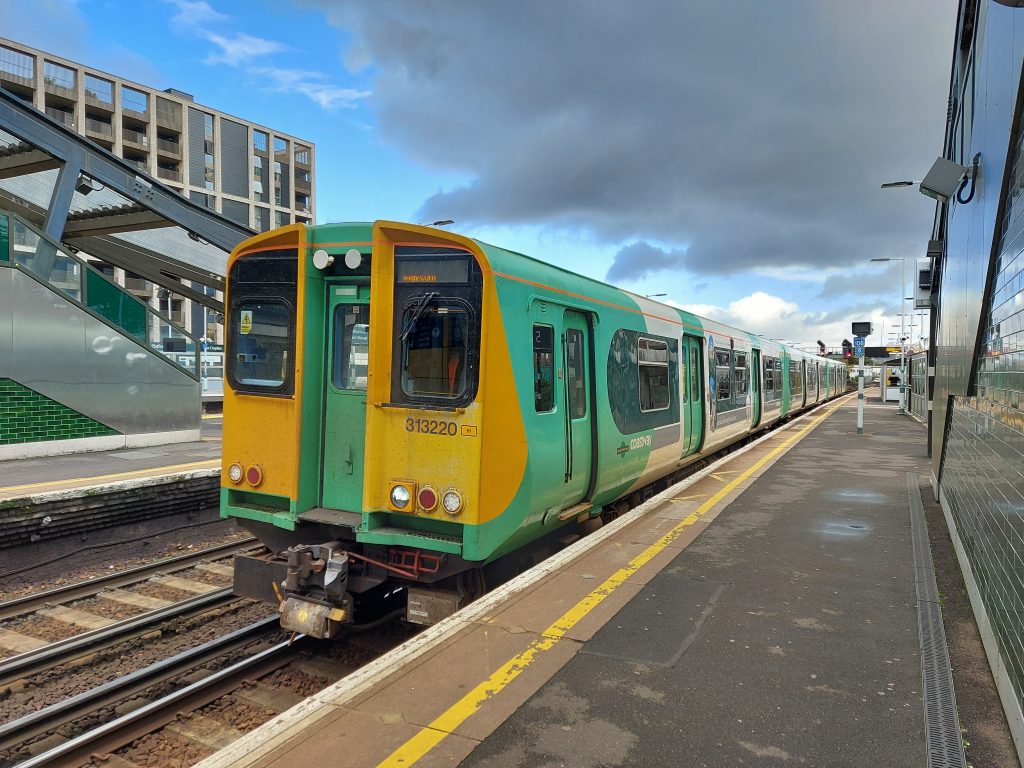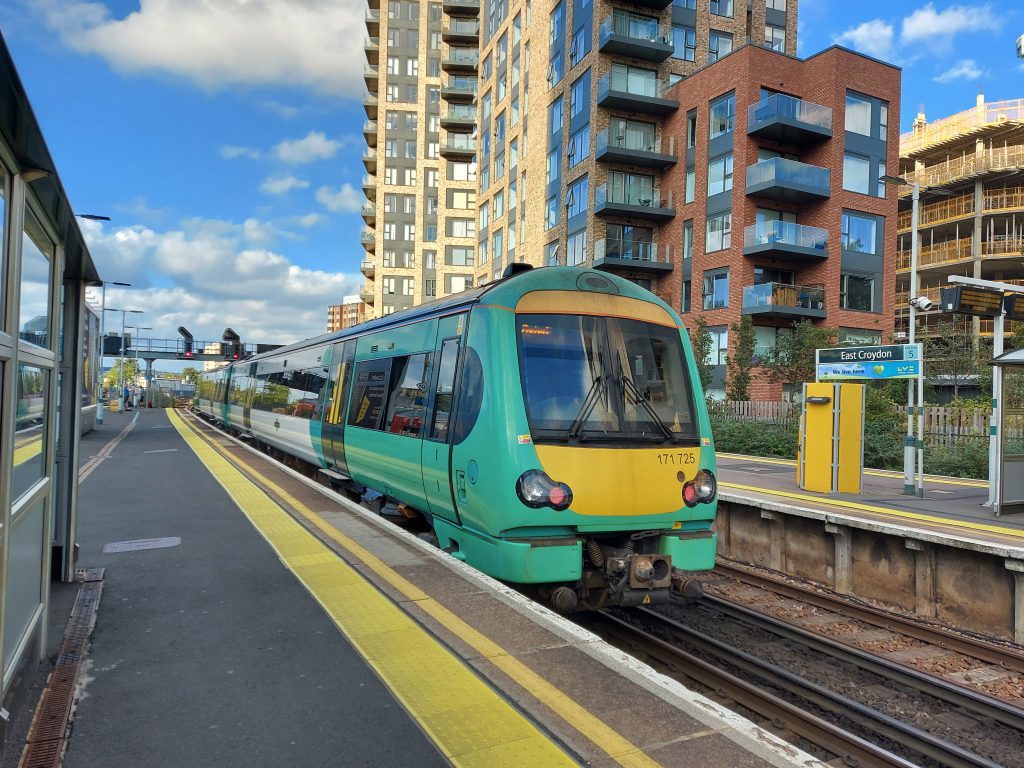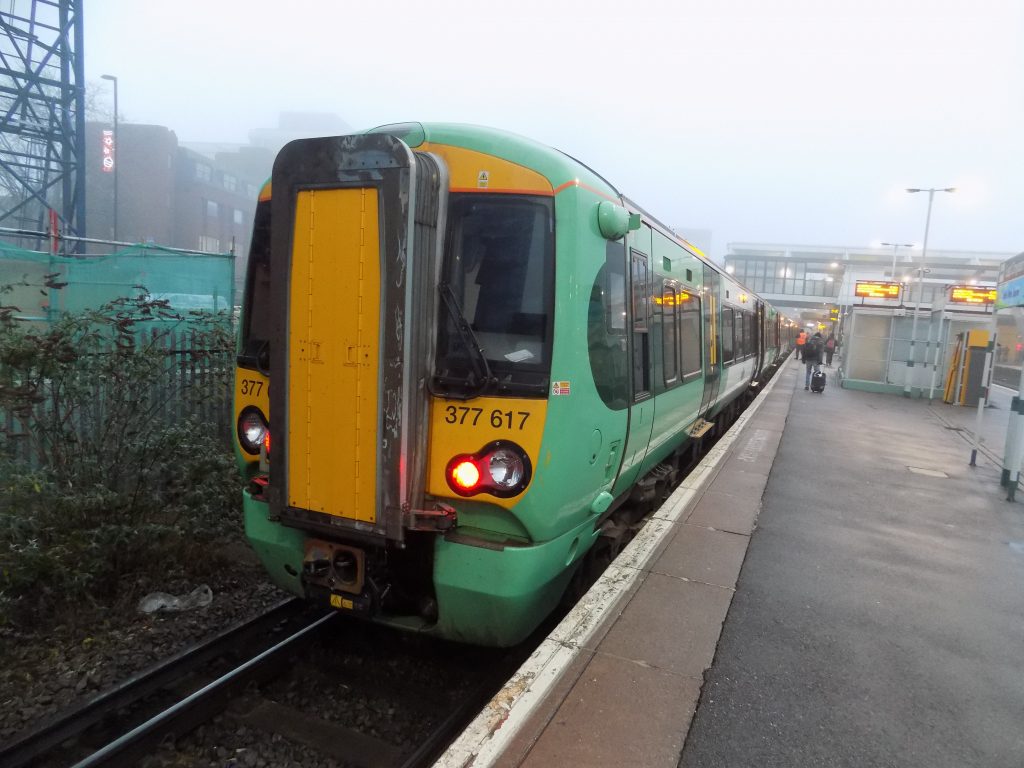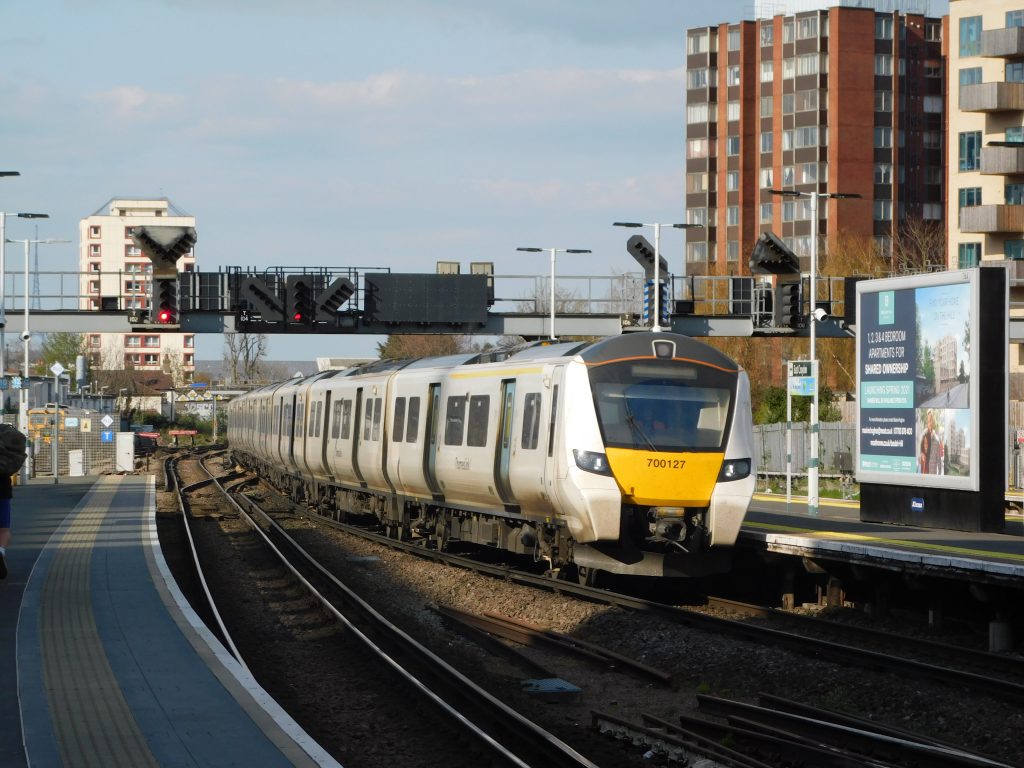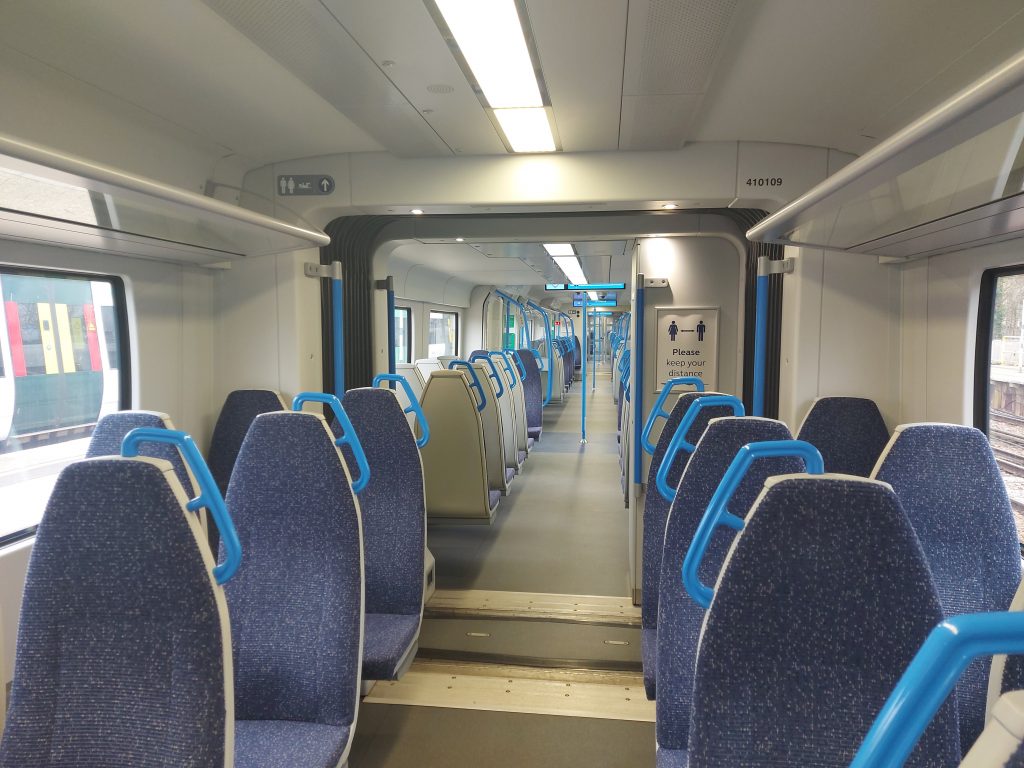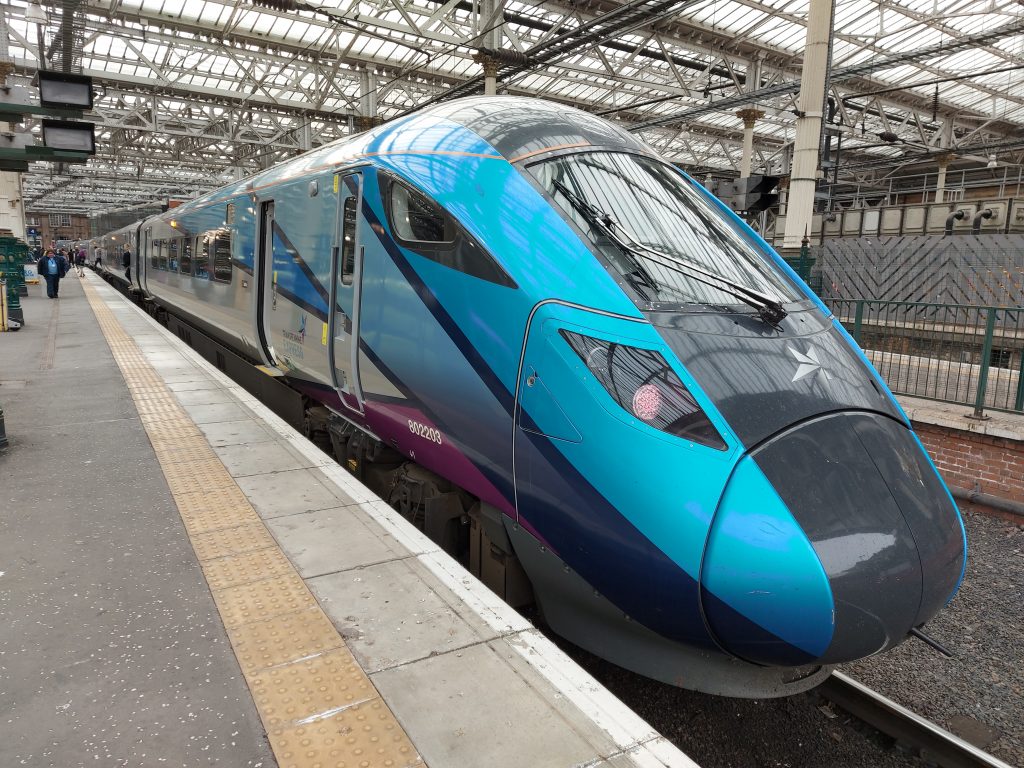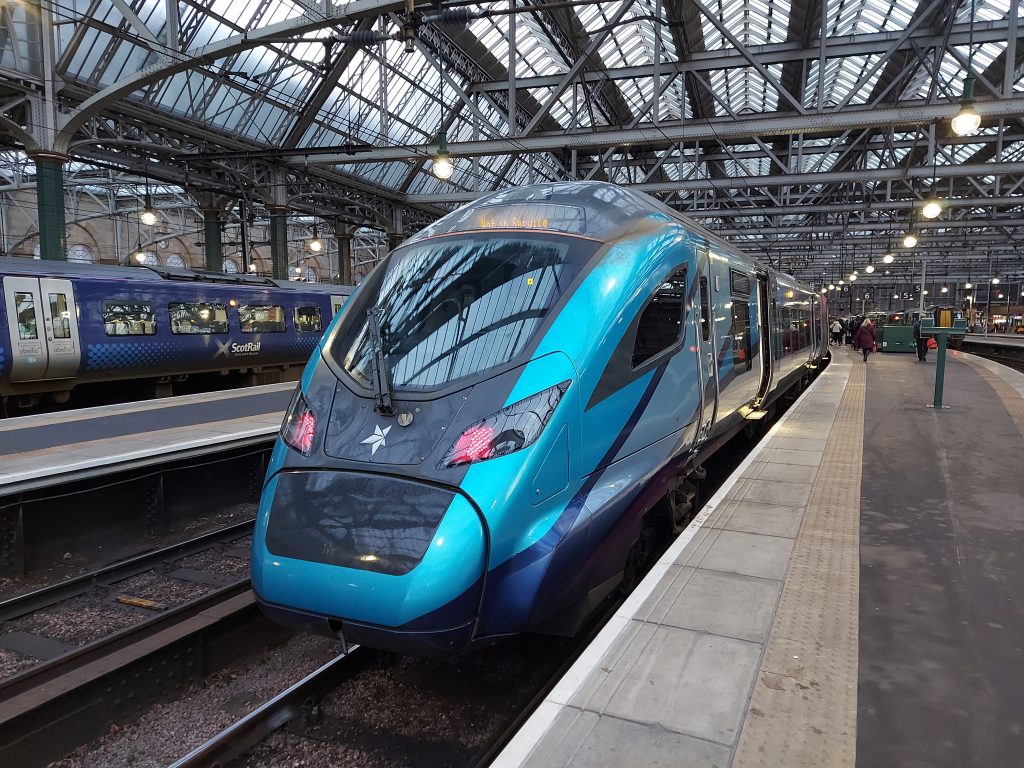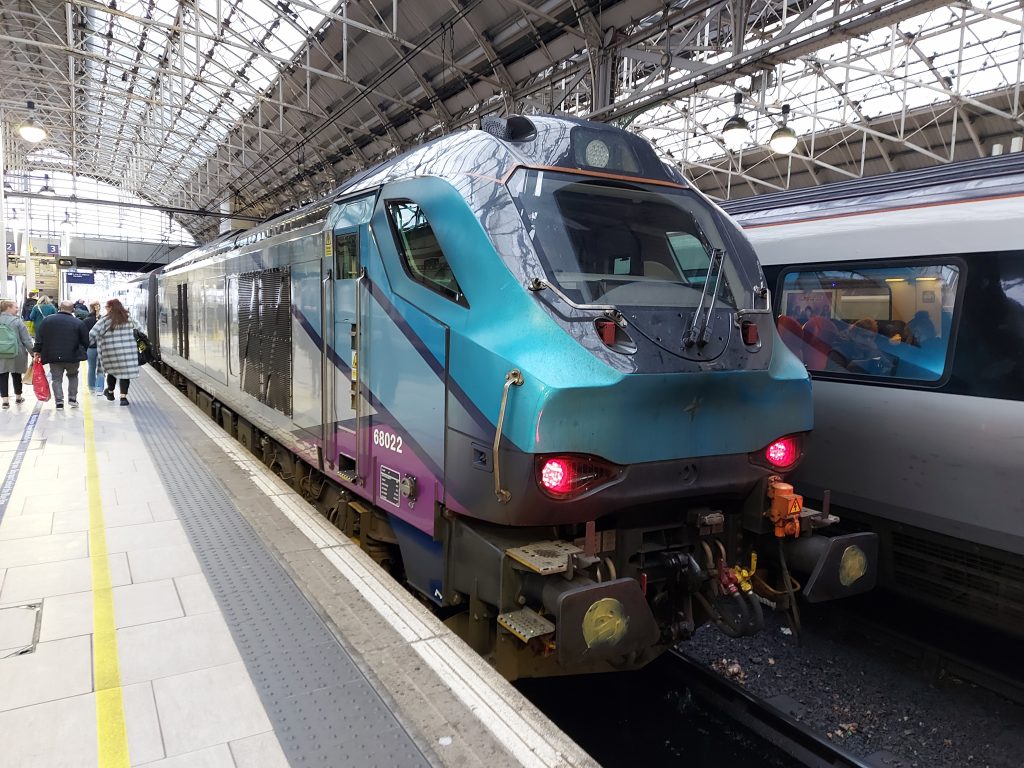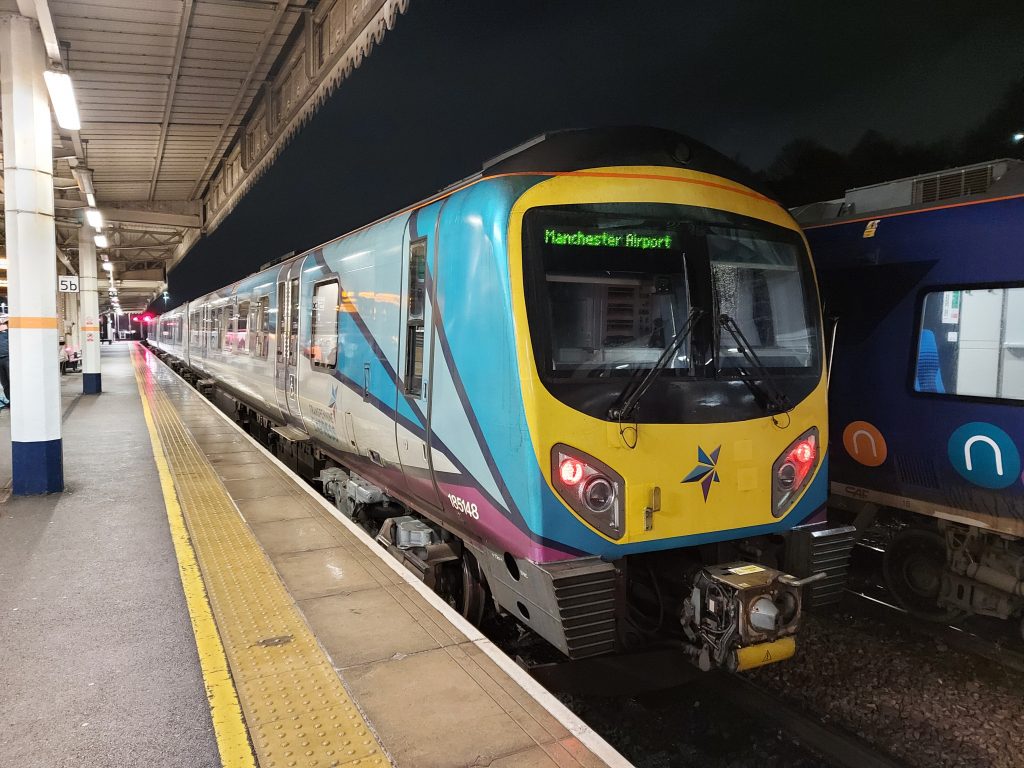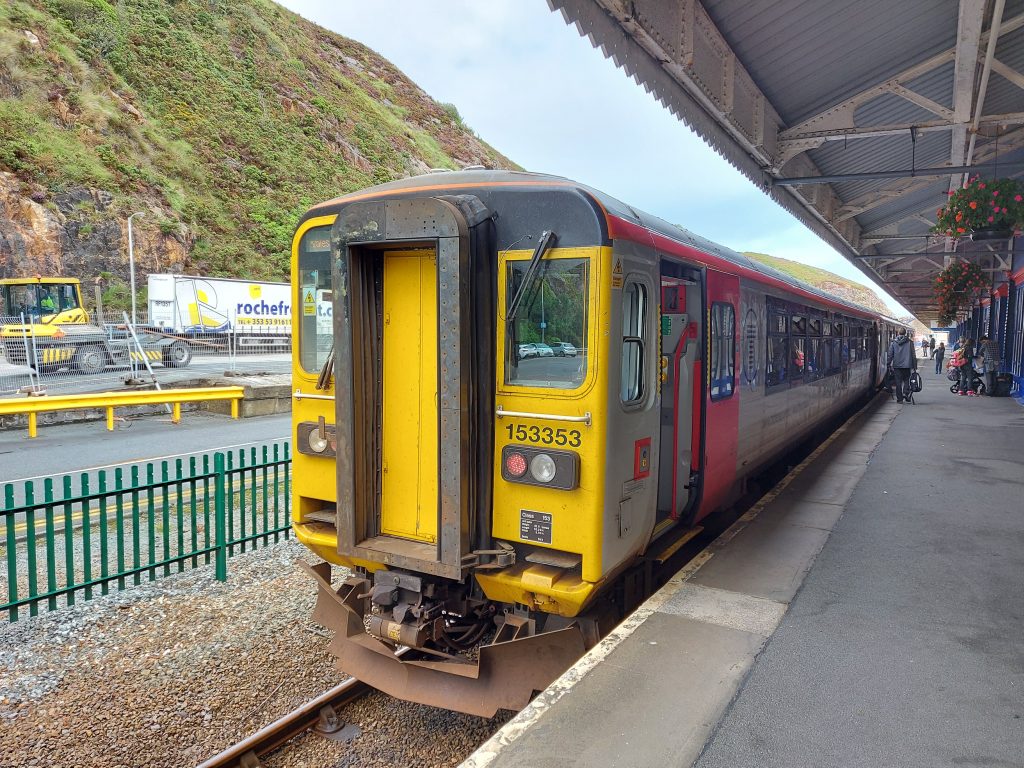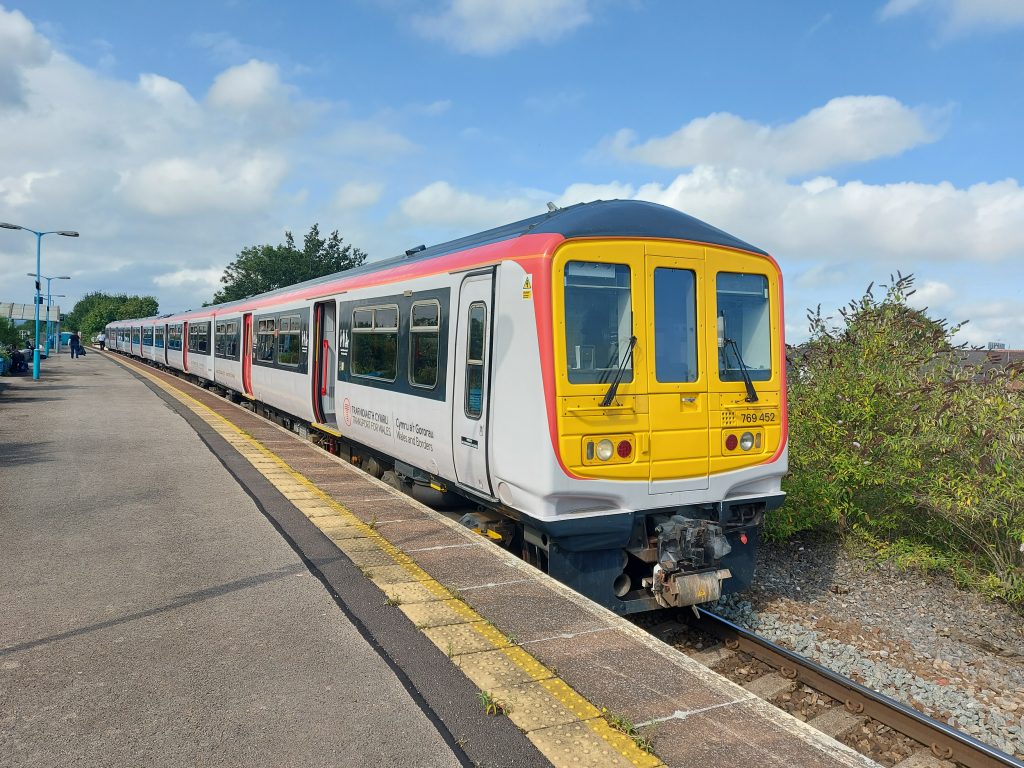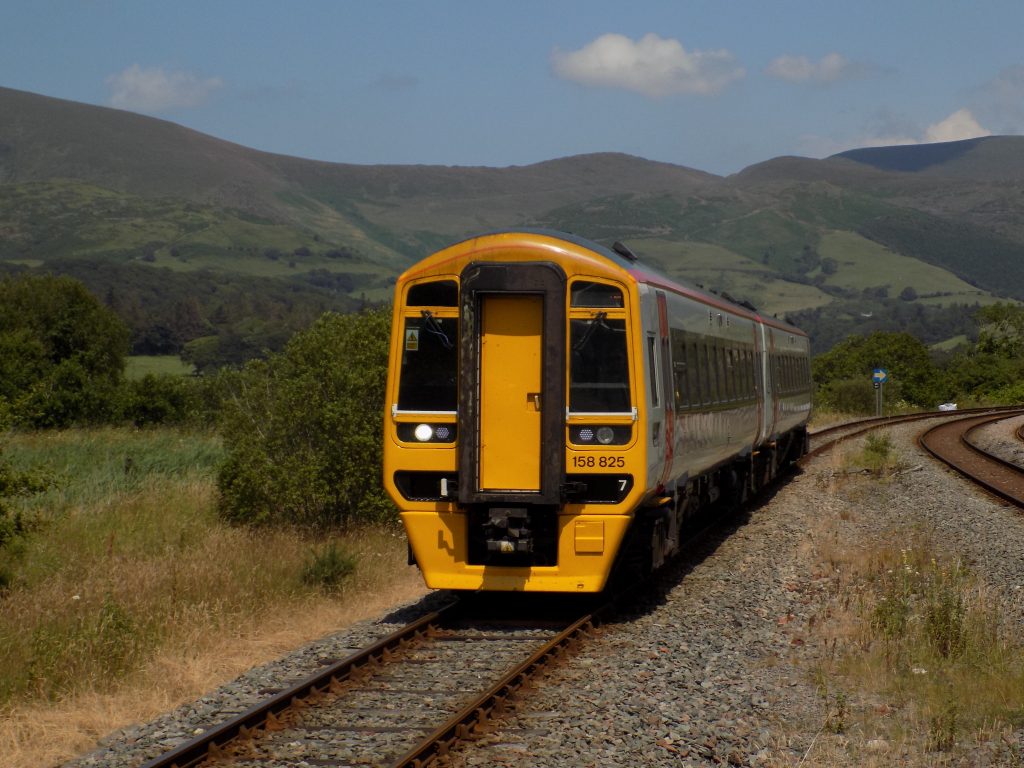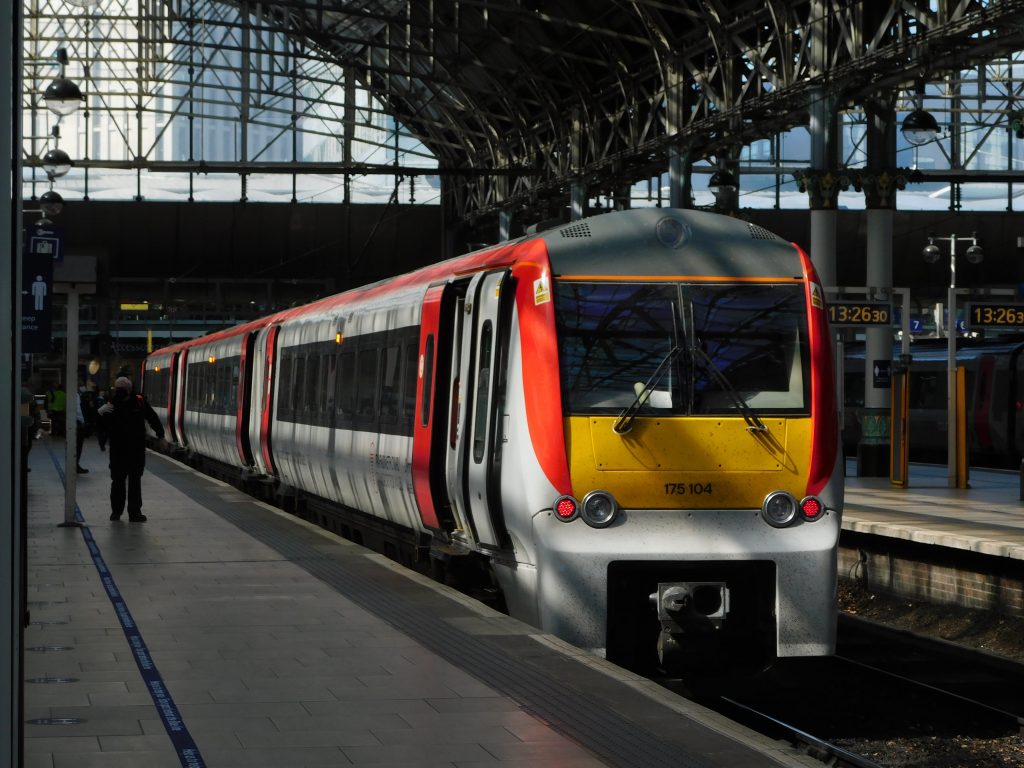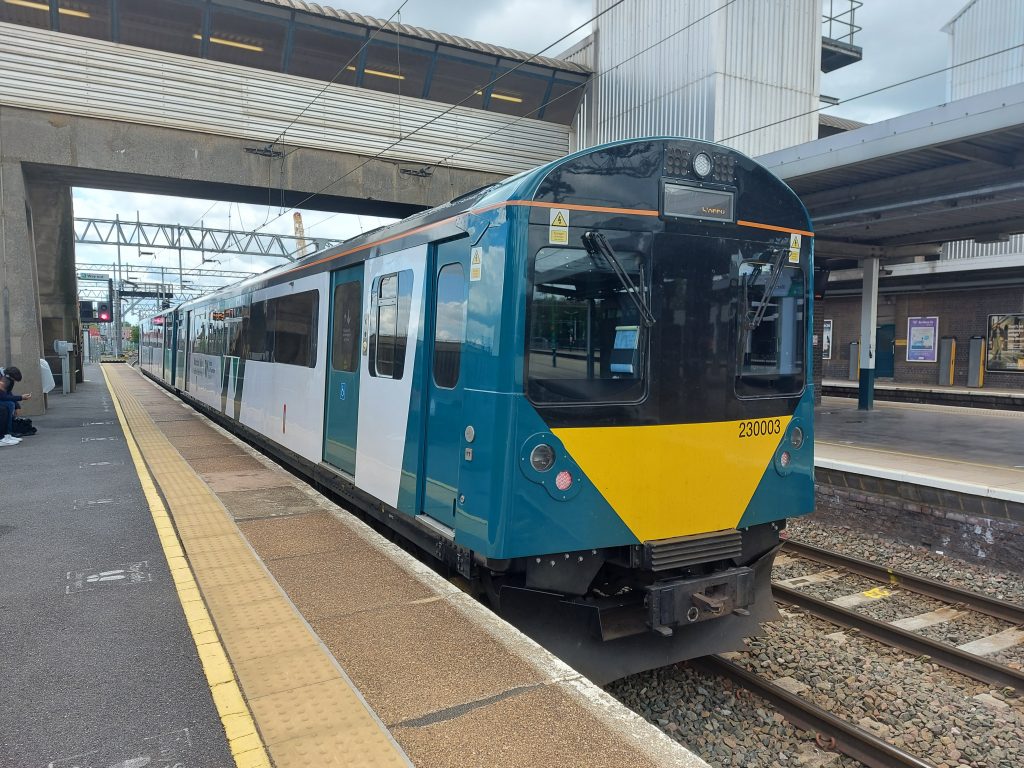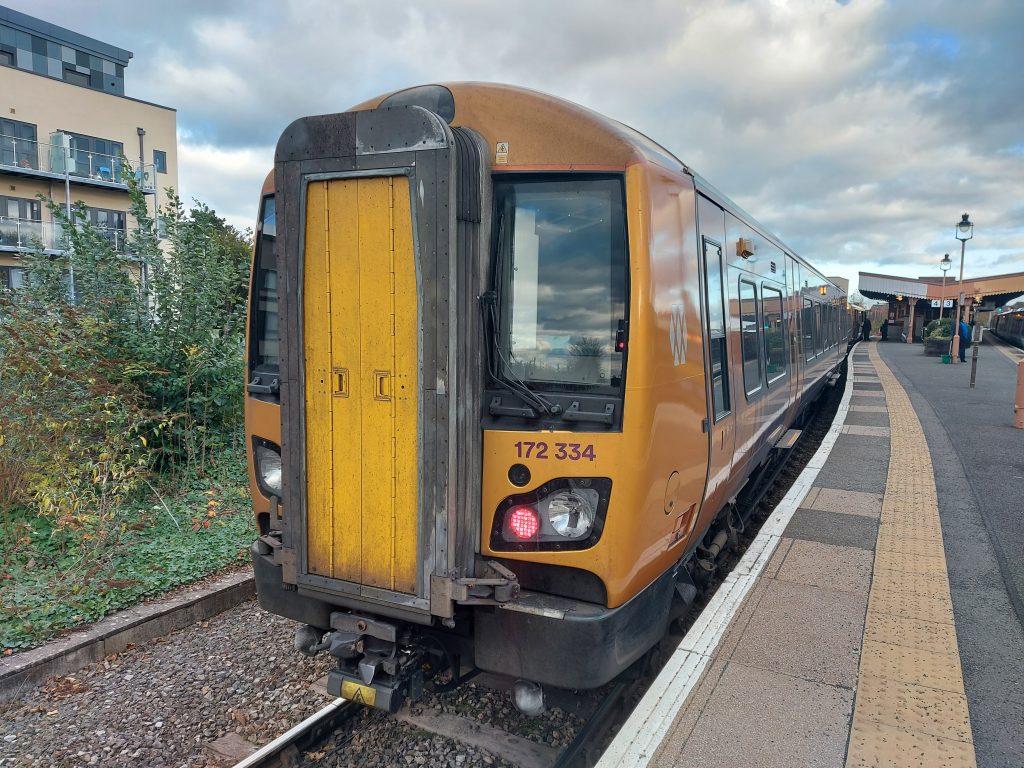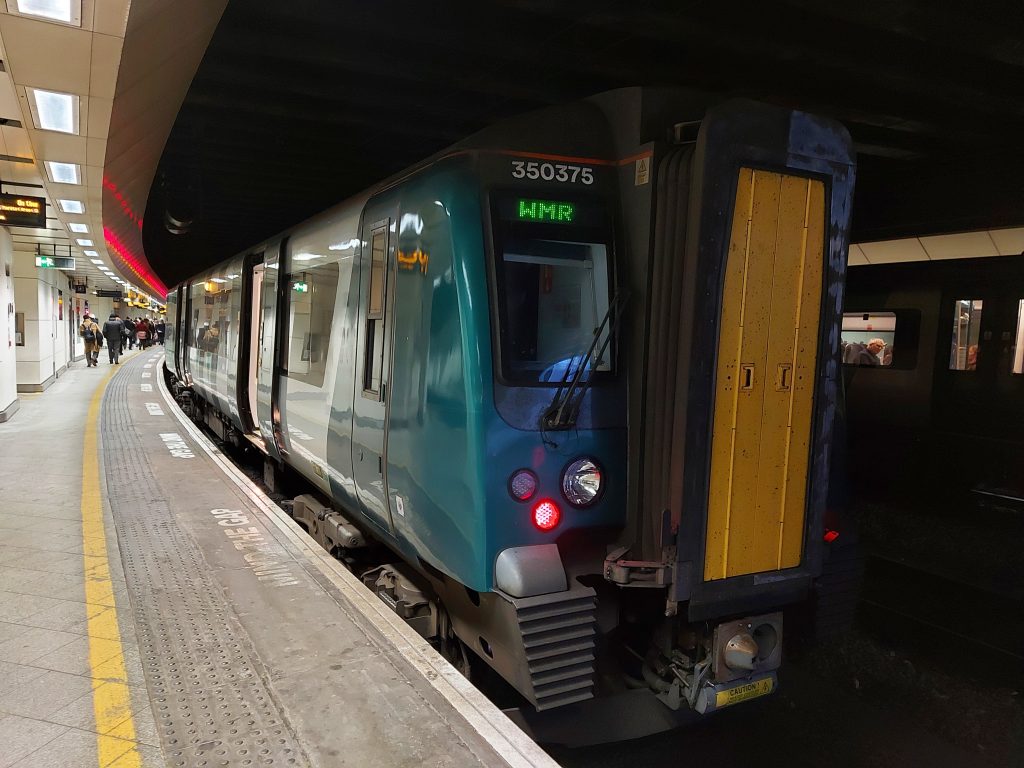Know your Train: What does my train look like?
Book train tickets
When you’re making a trip by train, it’s always useful to know what your train looks like. That could be the outside, inside or both! Whether you’re wondering which train to look out for at the station, or what your seat might look like, we’ve got you covered.
Know your Train: Avanti West Coast
Avanti West Coast operate two types of train on their routes. The vast majority are operated by Pendolino trains (left) which are formed of nine or 11 coaches. Trains to Chester and North Wales, as well as a few services to Scotland via Birmingham, are operated by Super Voyager trains (left). These trains have five coaches, though they’re often doubled up to run as 10 coach trains.
Avanti West Coast will soon be replacing their Super Voyager trains with new ‘bi-mode’ (diesel and electric) trains.
Know your Train: c2c
All of c2c’s services are currently operated by the same type of train, known as an Electrostar. Some of them are laid out with 2+2 seats (and a wider aisle) while others are laid out as 3+2. These trains all have four coaches, though they can run as doubles and triples up to a maximum of 12 coaches.
Know your Train: Chiltern Railways
Chiltern Railways operate a mixture of different Turbo (right) and Turbostar trains (right) on their services. Turbo trains generally operate trains from London Marylebone to Oxford, Banbury and Aylesbury Vale Parkway, as well as local trains between Birmingham/Stratford-upon-Avon and Leamington Spa. They either have two or three carriages, but can be doubled up.
Turbostar trains operate between Kidderminster, Birmingham Moor Street and London Marylebone, as well as selected trains to Oxford. They’re formed of two, three or four coaches and can operate in doubles or triples as needed.
Selected services to Birmingham and Kidderminster are also run by locomotive-hauled trains.
Know your Train: CrossCountry
CrossCountry operate three main train fleets. The first is their Turbostar fleet (left) which operate services between Stansted Airport and Birmingham, as well as Nottingham and Cardiff. They’re formed of either two or three coaches, though they’re often run in pairs to provide more capacity.
The High Speed Train fleet (centre) operates a small amount of trains between Edinburgh/Leeds and Plymouth. They’re all formed of seven coaches and are usually regarded as the most ‘comfortable’ of the trains that CrossCountry operate! They operate southbound in the mornings and start heading north again from early afternoon onwards.
Finally, the Voyager fleet (right) form the bulk of long-distance trains that CrossCountry operate. They have either four or five coaches, though they can be paired up (usually to give eight or nine coaches, but occasionally 10). You’ll find them on trains between Edinburgh and Plymouth/Penzance, Newcastle and Banbury, and Manchester and Bournemouth/Bristol.
Know your Train: East Midlands Railway
When it comes to East Midlands Railway, there’s a few main types of train that you can expect to find. Meridian trains (left) operate the vast majority of services between Sheffield/Nottingham and London. They’re formed of five or seven coaches, but the five coach trains are often doubled-up.
Adelante trains (centre) operate a selected number of trains between Sheffield/Nottingham and London. They’re usually formed of five coaches and can also be doubled-up.
Turbostar trains (right) are operating an increasing number of ‘regional’ services throughout the East Midlands. They’re formed of two or three coaches and are awaiting refurbishment after being transferred to East Midlands Railway from a number of different operators.
Know your Elizabeth Line Train
All trains on the Elizabeth Line are operated by these Aventra trains. Seating is in a mix of longitudinal and facing (in bays of four). They’re currently in a mixture of seven and nine-coach formations, but will all be eventually extended to nine coaches.
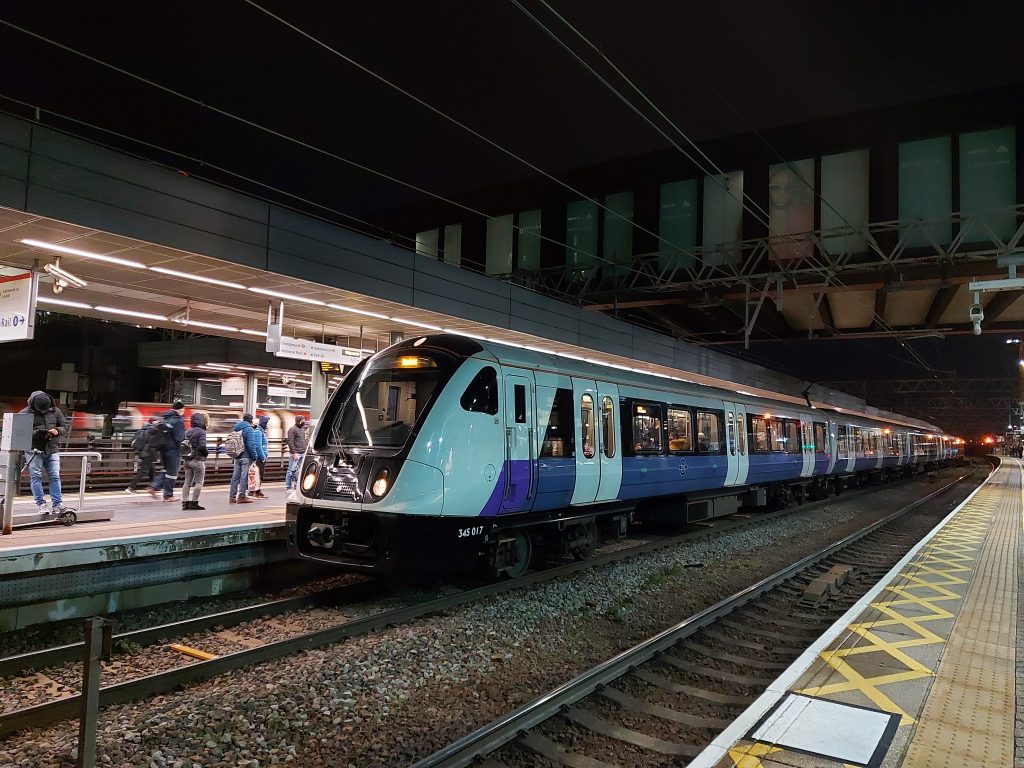
Know your Airport Train: Gatwick Express
All Gatwick Express trains are operated by these red Electrostar trains. They come in four coach formations, but regularly run in pairs or trebles, giving trains up to 12 coaches long. All seating is in a 2+2 layout.
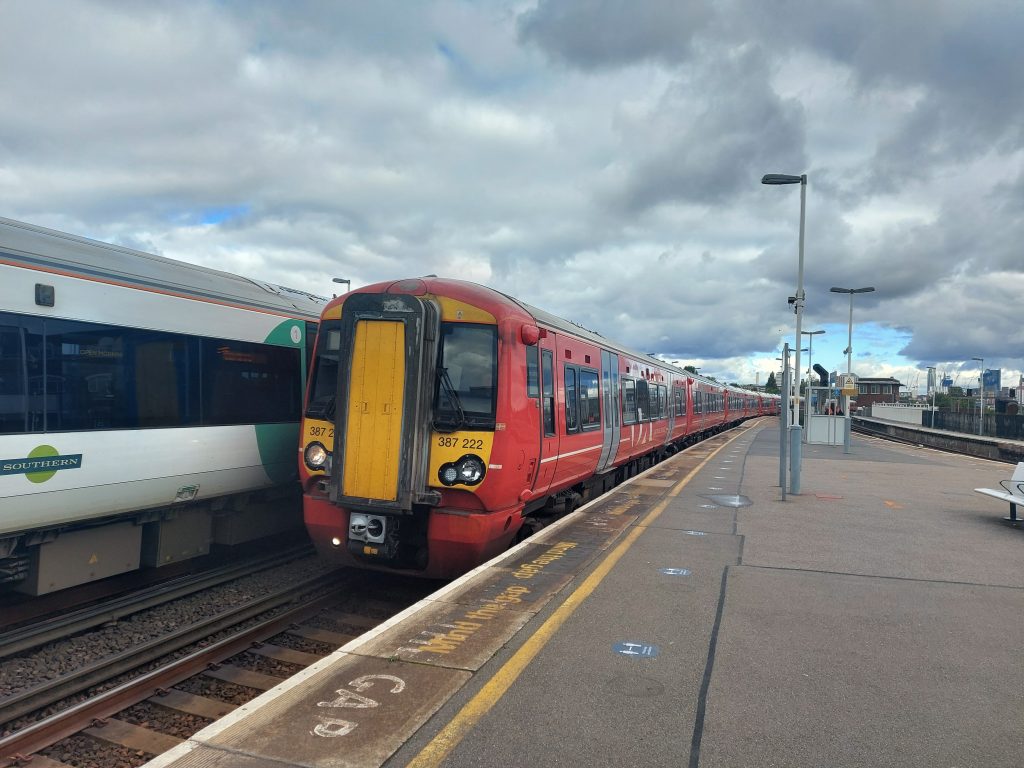
Know your Train: Grand Central
Grand Central have a fleet of five-coach Adelante trains for both of their routes between Sunderland/Bradford Interchange and London Kings Cross. Occasionally, they’ll be doubled up to 10 coach formations during engineering works or periods of high demand.
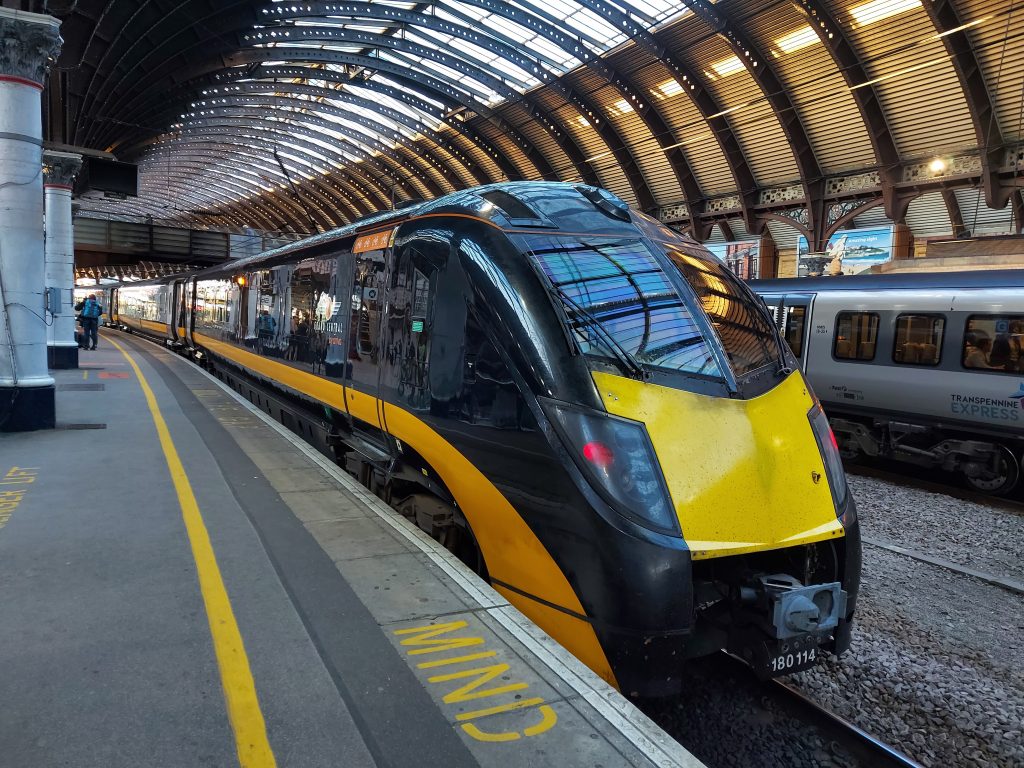
Know your Train: Great Northern
If you’re travelling between Peterborough, Cambridge, Kings Lynn and London Kings Cross on Great Northern, then you’ll likely have an Electrostar train (left). They’re four coaches long and run in formations up to 12 coaches. Just be careful when travelling north of Cambridge, as trains normally split up with only part of them going to Kings Lynn!
On trains out of Moorgate, you’ll have specially-designed Desiro trains in six-coach formations (right). Both types of train have seats in a 2+2 layout, and all have power sockets.
Know your Train: Great Western Railway
You’ll find a diverse range of trains operated by Great Western Railway. Here’s what you can expect:
- Castle Class trains (top left) operate between Cardiff Central, Taunton and Penzance, as well as on other selected services in the South West. They have four coaches, and they’ve been converted from longer ‘High Speed Trains’ which used to operate on services out of London Paddington, so they may look familiar!
- Express Sprinter trains (top middle) run on many services around the South West, as well as on some trains to/from Cardiff Central and Portsmouth Harbour. They have either two or three coaches, and often operate in pairs. They also run alongside some older Sprinter trains.
- Turbo trains (top right) run throughout much of the Great Western Railway network. You’ll find them on the Greenford, Windsor, Marlow and Henley branches, trains between Didcot and Banbury, local services in the Bristol area, and selected services in Devon.
- Travelling out of London Paddington on a long distance trip? You’ll likely have an Intercity Express Train (bottom left) formed of either five or nine coaches. Sometimes the five coach ones will double up to become a 10 coach train, too. They run services from London to Swansea, Plymouth, Penzance, Cheltenham Spa, Oxford and Hereford.
- Finally, you’ll find Electrostar trains which operate between Paddington and Didcot Parkway, as well as to Newbury. When required, they’ll also run up to Bristol Parkway and Cardiff Central. These trains have four coaches, but are regularly doubled up to eight. In the peak hours, there’s also a few 12 car trains.
Know your Sleeper Train: Great Western Railway (Night Riviera)
The Night Riviera train is locomotive-hauled and contains a selection of sleeping and seated accommodation. This is what a cabin looks like when it’s set up for just one person:
Know your Train: Greater Anglia
Greater Anglia have almost completely renewed their fleet with two types of brand-new trains. Aventra trains (left) are formed of five coaches (and can be doubled up to 10 coaches) and operate on trains from Liverpool Street to Cambridge, Southend, Braintree, Clacton, Walton-on-the-Naze, Ipswich and Harwich. All seating on these trains is in a 3+2 layout.
On the rest of the network, FLIRT trains run. You’ll find 12 coach electric FLIRT trains on services from London Liverpool Street to Norwich and Stansted Airport, and three or four coach bi-mode trains (right) on ‘rural’ services across Norfolk and Suffolk.
Know your Airport Train: Heathrow Express
The Heathrow Express fleet is exclusively made up of Electrostar trains. They all have four coaches, but they’re regularly paired up to make an eight-coach train. To make them more suitable for serving Heathrow, they have additional luggage racks as well as a First Class section.
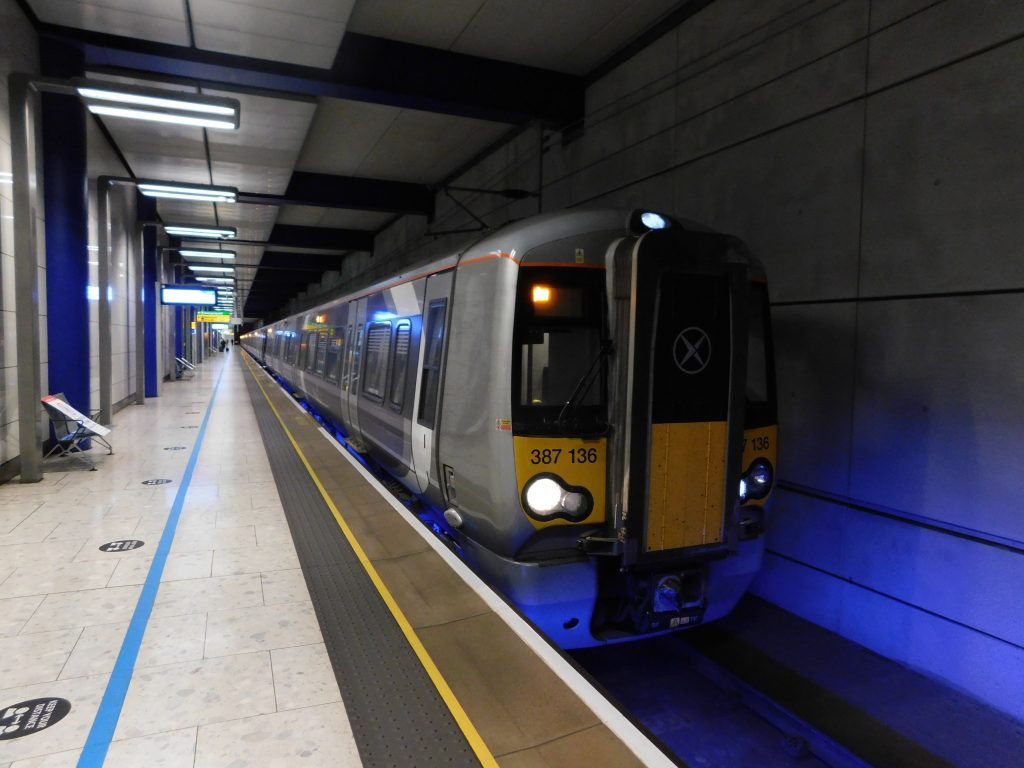
Know your Hull Train
The Hull Trains Paragon trains make up the entirety of their fleet. They’re formed of five coaches, but on some services they run together to make a 10 coach train.
Know your Train: LNER
LNER operates two kinds of train. Azuma trains (left) are formed of either five or nine coaches, with the five coach trains often being doubled up to make a 10 coach train. Some of them are also ‘bi-mode’ and capable of switching between electric and diesel, which allows them to run to places such as Aberdeen and Inverness.
The second type (left) used to be known as “Intercity 225” trains but are now referred to by LNER simply as Electric Trains. They run between London and Leeds/York and all have nine coaches.
Know your Train: London Overground
London Overground has two types of train: The Aventra (left) and Capitalstar (right). They’re laid out like your typical Metro train, with all seats being longitudinal. The Aventra has either four or five coaches, while all Capitalstar trains now have five coaches.
Know your Train: Lumo
Lumo operates a fleet of Intercity Express Trains which are fully Standard Class throughout. They’re formed of five coaches and have more seats than your typical Intercity train. They’re also fully electric, unlike some of the trains that LNER run on the same route.
Know your Train: Merseyrail
Merseyrail operates a fleet of Class 507 and 508 trains on their services around Merseyside and the Wirral. They all have three coaches, and regularly run doubled-up as six-coach formations. In the coming years, Merseyrail will be retiring these trains after over 40 years of service on their network.
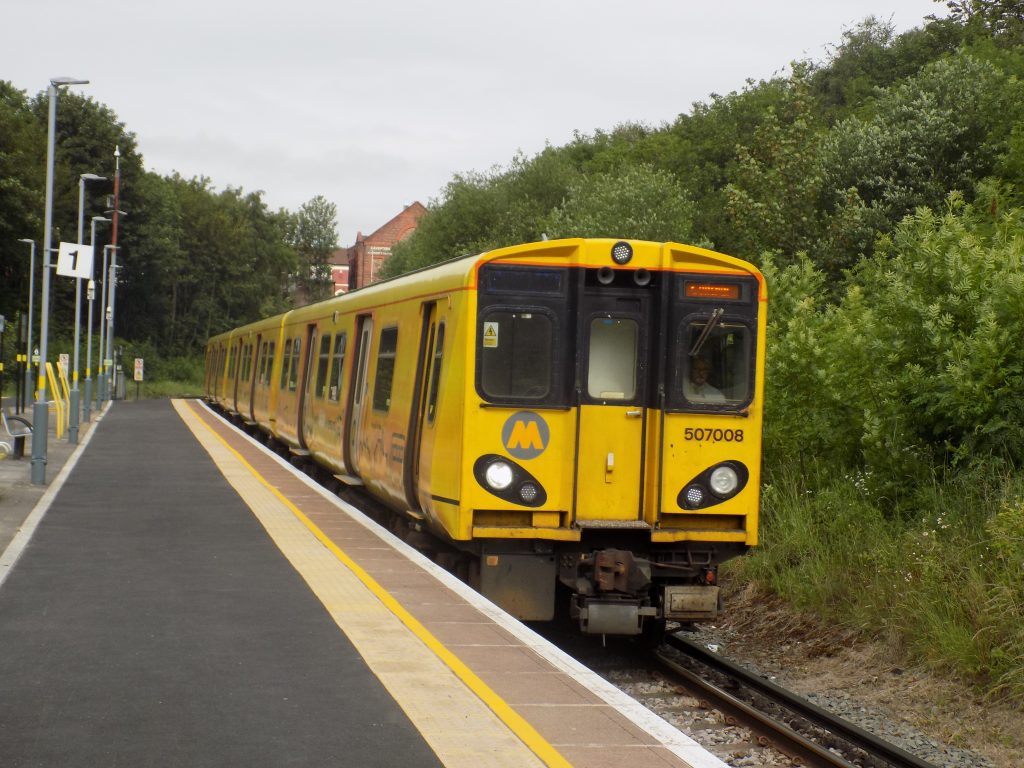
Know your Train: Northern
Northern operates an incredibly diverse fleet of trains on their network. Their newest trains are called Civity trains (left) and their electric version operates on services between Leeds and Doncaster/Skipton/Ilkley/Bradford, as well as on electrified lines throughout the North West. The diesel version of this train operates throughout Yorkshire, Lancashire and Greater Manchester. The electric trains have either three or four coaches (with the three-coach ones often running in pairs) while the diesel versions come with two or three coaches (and both types often run paired up).
Some older electric trains (middle) have been converted to ‘bi-mode’, which means that they can now run to places such as Southport and Wigan. You’ll also find their fully electric counterparts on trains to Liverpool and Crewe. These trains all have four coaches.
Finally, different versions of Sprinter trains (right) form the bulk of other services across the Northern network. They’ve all been recently refurbished, too. The vast majority of these trains have two coaches, but some have three. They’re all able to run together, so you’ll often see them paired up.
Comharraich an trèana agad: ScotRail
ScotRail runs a selection of trains designed for short and long-distance services. If you’re travelling on a non-electrified line in Scotland, you may find yourself on a Sprinter train (top left). They all have two coaches (but can run in pairs or triples) and have a number of different 2+2 seating layouts depending on where they’re designated to run.
The eXpress (top middle, top right) trains are the newest trains that ScotRail operate. You’ll find them on trains between Edinburgh and Glasgow (via Falkirk High and Shotts) as well as to Dunblane, Alloa and North Berwick. They have three or four coaches, and often run paired up. Notably, only the four-coach versions have First Class.
Services in the Glasgow and Strathclyde area are operated by a wide variety of different electric trains (middle) with different lengths and interior layouts.
Finally, a large proportion of trains between Edinburgh/Glasgow and Inverness/Aberdeen are now in the hands of Inter7City trains (bottom). These trains have four or five coaches and have been converted from longer InterCity 125 trains that used to operate in the South West of England.
Know your Train: South Western Railway
On South Western Railway, there’s a number of different train types, but the vast majority are made up of these four. If you’re travelling to Salisbury or Exeter St Davids from London Waterloo, or between Romsey and Southampton, you’ll find yourself on an Express Sprinter (top left). They’re formed of two or three coaches, with the two-coach trains predominantly working alone in the Southampton area or attached to longer trains towards London. The three-coach trains often run in twos or threes.
All longer distance electric trains are operated by Desiro trains. You’ll find the longer-distance version (top centre) on trains to Weymouth and some trains to Portsmouth, with the suburban version (top right) on everything else, such as trains to Alton and Basingstoke. The long-distance version has five coaches (and often runs as a pair to make 10 coaches, sometimes splitting up on the way). The suburban version has four coaches but often runs as either eight or 12 coaches by joining together two or three trains.
If you’re travelling in the vicinity of London, you’re likely to get a Class 455 train (bottom). These are being phased out in the next few years, but for now you’ll find them in either four-coach formations, or coupled together to make an eight-coach train.
Know your Train: Southeastern
Southeastern operate multiple types of train on their services. You’ll find Networker trains (top left and middle) on most short-distance and suburban services. These have four coaches (though they’ll often have a two-coach version attached) and can run at a variety of lengths up to 10 coaches.
Electrostar trains (top right) operate services to Tunbridge Wells, Dover, Ramsgate and Hastings, as well as Sheerness-on-Sea and the line between Strood and Paddock Wood. They have three or four coaches, and can operate in combinations all the way up to 12 coaches.
Finally, Javelin trains run on the high-speed line from St Pancras to Ashford and Dover. They have six coaches, but can run in pairs as 12 coach trains. They’re Britain’s fastest domestic train, running at speeds of up to 140mph.
Know your Train: Southern
Southern’s fleet is made up of three types of train. You’ll find the oldest, the Class 313, on a number of suburban services around the South Coast, though they’re set to be retired very soon after almost 50 years of non-stop service! They have three coaches, but can run in pairs during special events such as football matches.
Turbostar trains operate on services from London to Uckfield, as well as Eastbourne to Ashford. You’ll find them in three or four-coach formations, and they’ll often run as longer trains on the Uckfield route.
Finally, Electrostar trains form the vast majority of services on Southern. They’re formed of three, four or five coaches, with the three and five coach trains sticking to suburban trains in the vicinity of London. The three and four coach trains can run together in combinations up to 12 coaches, while the five coach trains often pair up to form a 10 coach one.
Know your Train: Thameslink
The entire Thameslink fleet is made up of Desiro trains. They’re either made up of eight or 12 coaches, and were designed to allow for quick passenger turnover during peak hours. In Central London (between London Blackfriars and London St Pancras) they run automatically without the need for the driver to intervene during normal operation. This allows for more trains to run through this busy section of railway!
Know your Train: TransPennine Express
TransPennine Express have invested in a variety of brand-new trains in recent years, known as Nova trains. These are all formed of five coaches, but they do look a little different from each other!
Nova 1 trains (top left) run between Newcastle and Liverpool, as well as selected services between Manchester Airport and Edinburgh.
Nova 2 trains (top middle) operate services between Manchester Airport and Edinburgh/Glasgow, as well as services from Liverpool to Glasgow.
You’ll find Nova 3 trains (top right) on selected services between York and Scarborough at the moment, but they’re scheduled to start taking over some trains between Cleethorpes and Liverpool in December 2022.
Finally, the Class 185 (bottom) runs from Saltburn, Cleethorpes and Hull to Manchester, as well as on local trains serving smaller stations between Leeds and Manchester. They’re able to stand-in on just about any part of the TransPennine network, but they’re smaller than the rest of the fleet and only have three coaches. On some services, they’ll pair up and run as six-coach trains.
Adnabod eich Trên: Transport for Wales
You’ll find a variety of trains on the Transport for Wales network. Sprinter trains (top left) run on lightly-used lines across Wales, such as to Fishguard and between Swansea and Shrewsbury via Llandrindod. They have just one carriage, though you’ll often find them paired up. They also have a two-coach version, which runs on services throughout the Cardiff Valleys.
The other type of train you’ll find on Cardiff Valleys services is the Class 769 (top centre) which is a converted electric train. While capable of still running on electric, it only runs on diesel at the moment. All trains have four coaches.
Express Sprinter trains (top right) operate all services to Aberystwyth and Pwllheli, as well as some trains between North and South Wales. They’re two coaches long, but you’ll often find that they run in doubles (or occasionally triples) on busier parts of the network before splitting into smaller sections.
Finally, the rest of the long distance trains on the network are operated by Coradia trains (bottom). They’re formed of two or three coaches, but will occasionally join together to make a four, five or six-coach train.
Know your Train: West Midlands Trains
West Midlands Trains makes up the services branded as ‘West Midlands Railway’ and the services branded as ‘London Northwestern Railway’.
The most unusual type of train you’ll find is on the Bedford to Bletchley line, which is operated by D-Trains (left) which are converted from London Underground trains. They have two coaches are were designed to be cheaper to operate and maintain than purchasing entirely new stock.
West Midlands Railway operate different types of Turbostar trains (middle) on their network. You’ll find these two or three-coach trains on lines such as Worcester to Stratford-upon-Avon, as well as Birmingham to Hereford and Nuneaton to Leamington Spa.
London Northwestern Railway mostly operates Desiro trains (right). They have all have four coaches, but they commonly run as eight or 12-coach trains on routes such as Birmingham/Northampton to London.
Ready to book your next journey now that you know about your train? Do it easily with Railsmartr. You can also check the National Rail website for more information about train times and lengths.
